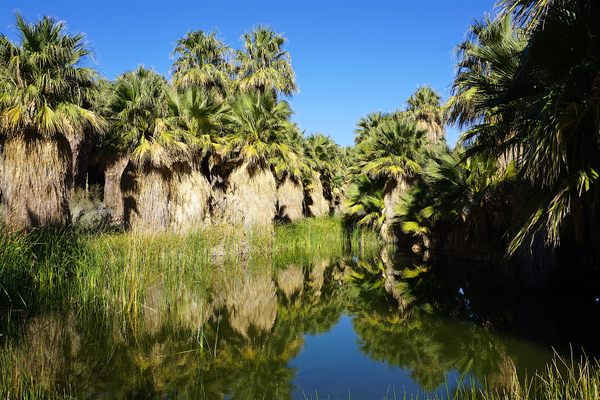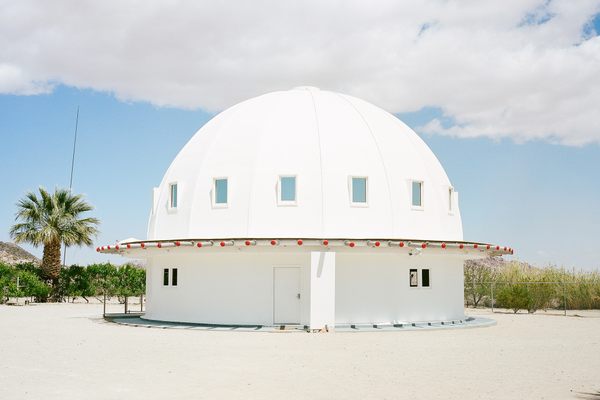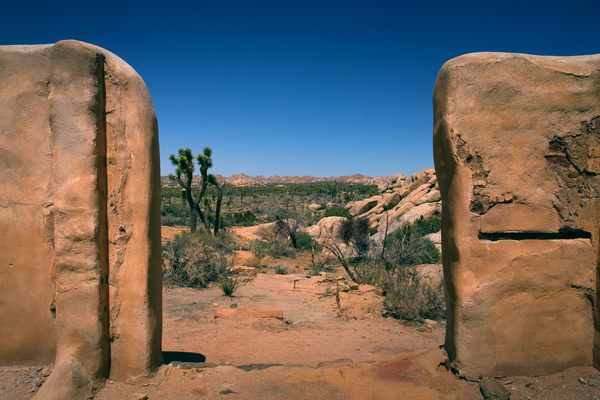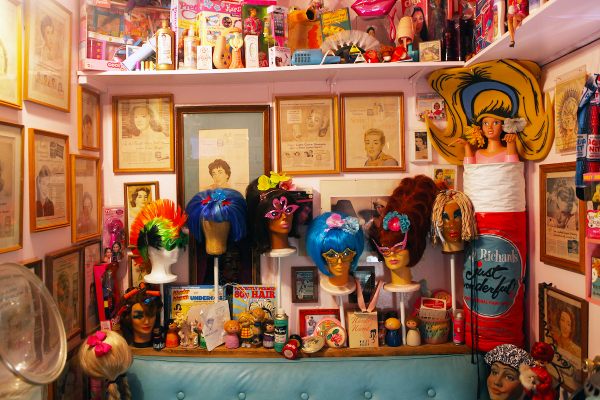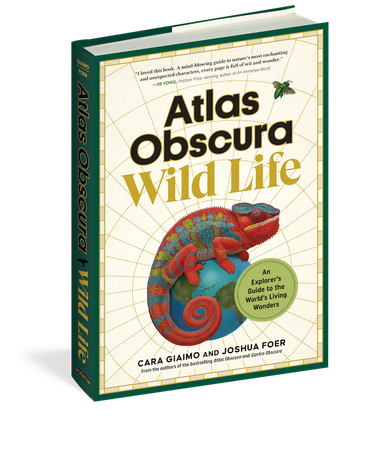An Explorer's Guide to
Hidden Coachella Valley
The Coachella Valley and its environs boom in the spring, when tens of thousands of music lovers flock to catch their favorite artists perform in front of a dramatic, mountainous backdrop. But this region stays wonderfully weird all year long.
If the festival drew you to the area and you only have a day to explore, choose a direction: Either head north, toward Joshua Tree and Landers, or southeast to the Salton Sea and nearby oases for a blissful respite. If you can spare a couple of days, lucky you—go forth and see it all.
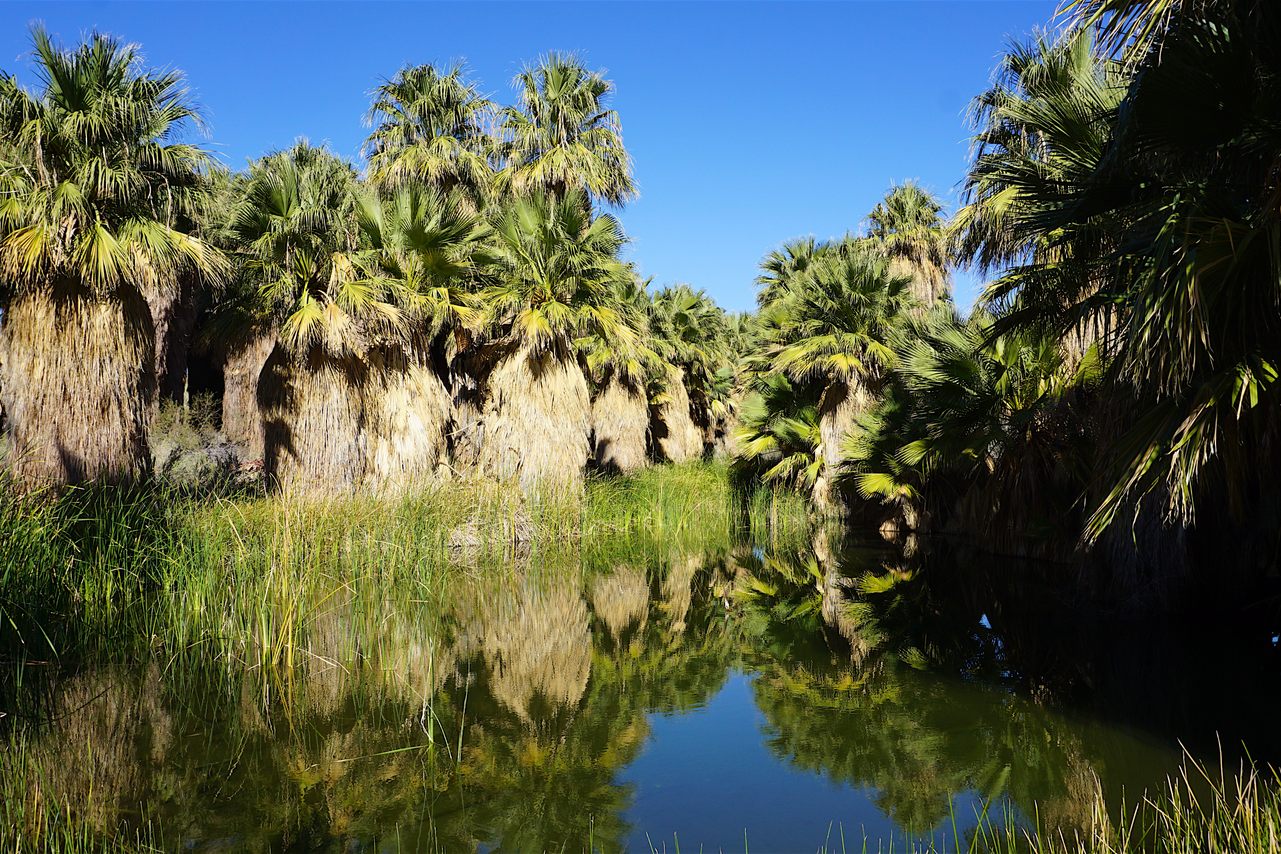
1. Thousand Palms Oasis at the Coachella Valley Preserve
An easy way to appreciate the Colorado Desert's varied ecosystems is to spend an afternoon tromping around this preserve, which boasts more than 25 miles of trails that wind through all sorts of landscapes. Stroll past the riparian forest—which recalls a marsh—and the desert wash, home to smoke trees with branches that look like ash-gray plumes. If you're lucky enough to walk the Moon Country Trail during a superbloom, you’ll be treated to a panoramic view of buttery yellow desert sunflowers.
But don’t miss the McCallum Trail. This two-mile loop takes you around a pond that's fed by water seeping up from a nearby fault line. Note the prevalence of California fan palms (Washingtonia filifera), a thirsty bunch that thrive in this unique landscape. (This oasis is also, unfortunately, ideal for red swamp crayfish, which have moved in and outcompeted the native desert pupfish, much to the dismay of the preserve’s naturalists.) The trails are well marked, but it’s easy to get lost in your thoughts here. Some of the paths have set hours, so check the website or visitors’ center for times so you don’t find yourself stranded.
29200 Thousand Palms Canyon Rd, Thousand Palms, CA 92276

2. Date Shakes
The dry, warm climate makes the Coachella Valley an ideal place to grow date palms. That’s good news for you, because dates are the key ingredient in date shakes, and date shakes are delicious. This icy marriage of dates, milk (or vegan alternatives), and sometimes bananas and spices is especially refreshing on a day when you’re broiling beneath the desert sun, but it’s reliably tasty all year. Whenever you visit, there are tons of places to sip one. In downtown Palm Springs, Great Shakes evokes an old-school diner, and you'll find a tiny donut threaded on your straw. Thirsty visitors can also throw one back at Hadley Fruit Orchards and Shields Date Garden, where expansive grounds also feature ponds, fountains, and a few dozen Biblical sculptures.
160 S. Palm Canyon Drive, Palm Springs, CA 92262

3. Sky Village Swap Meet
If the directions seem wrong, you’re going the right way. Turn in to a nondescript alley to get to the grounds of the Sky Village Swap Meet, the site of a former drive-in movie theater. When you arrive, you’ll be pleasantly disoriented. This swap, which is open on Saturdays and Sundays from morning to early afternoon, is a hybrid: part sculpture garden and part salvage wonderland. Stop in to pan for treasures, and be sure to arrive early if you want to grab a biscuit at the cafe.
Of all of Sky Village's interesting nooks, the most enchanting is Bob’s Crystal Cave. Decked out in gemstones, foam, tiny trees, a running stream, and plenty of paint, the cave evokes a big, fluorescent aquarium. It’s the handiwork of the late Bob Carr, along with Merete Vyff Slyngborg and Mette Woller, who helped Carr restore it to his original vision after he destroyed the first amid fears that the land would be seized by eminent domain. If the door is open, grab a seat on the bench. If it’s locked up, peek in through the porthole windows and marvel at Carr's labor of love.
7028 Theatre Rd, Yucca Valley, CA 92284
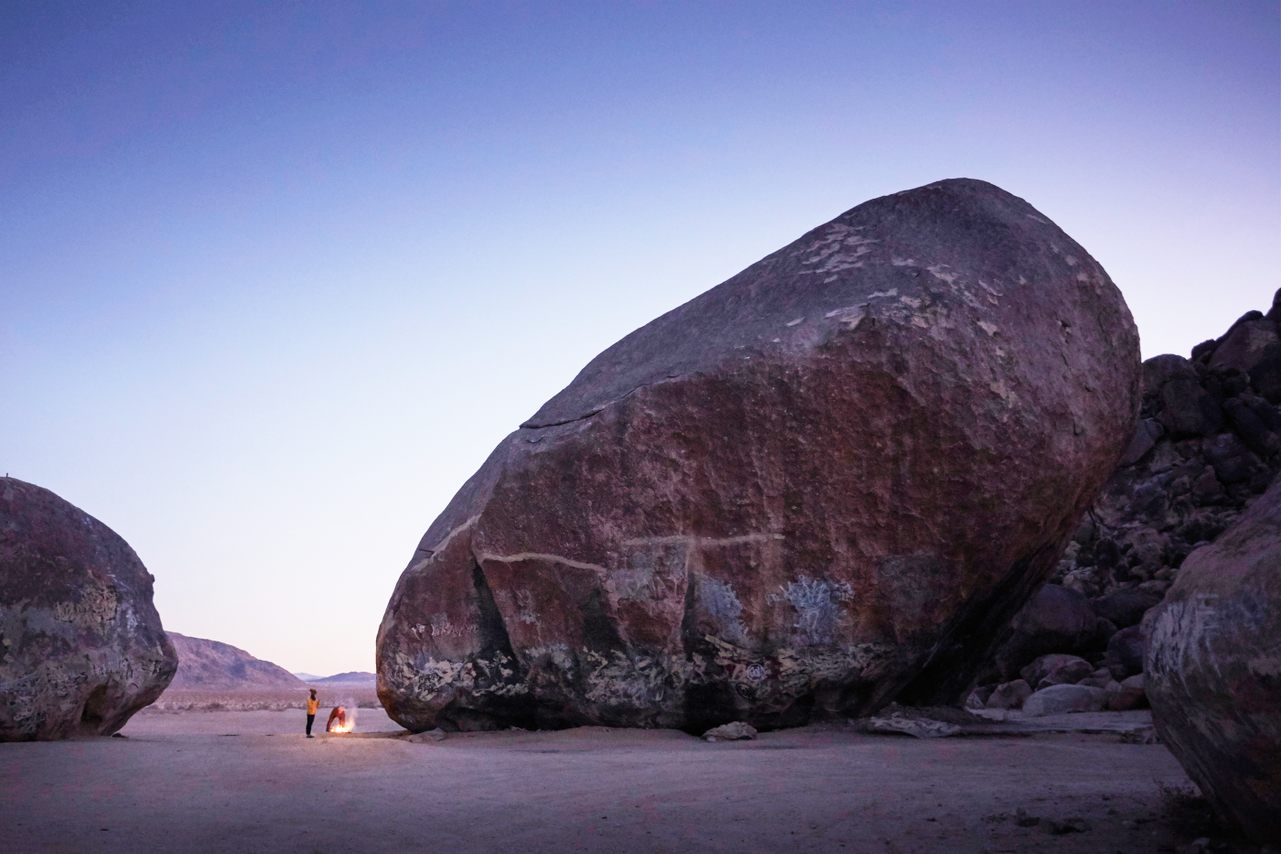
4. Giant Rock
You might think you’ve reached this big boulder a couple of times before you really get there. Along the way, you’ll spend several minutes driving (slowly, please) down a rolling, sandy road. You’ll bounce past lots of fascinating geology, including piles of rocks that look like rough-cut geodes. Hey, that boulder looks pretty big! Or maybe it’s this one? Any confusion is understandable: This desert is freckled with big rocks. By the time you arrive at Giant Rock, though, there’s no more doubt. This particular boulder is absolutely enormous.
In fact, it's roughly seven stories tall—so big that humans nearly disappear next to it, and a man named Frank Critzer even once built a home underneath. Giant Rock is widely considered to be among the largest free-standing boulders in the world, and has captivated people for centuries. It was said to be significant to several Native American communities, and in the mid-20th century, UFO enthusiasts flocked to it. It’s powerful to be in the shadow of something so startlingly huge, and you may find yourself entranced, wanting to stay for as long as you can, without knowing exactly why.
Landers, CA 92285
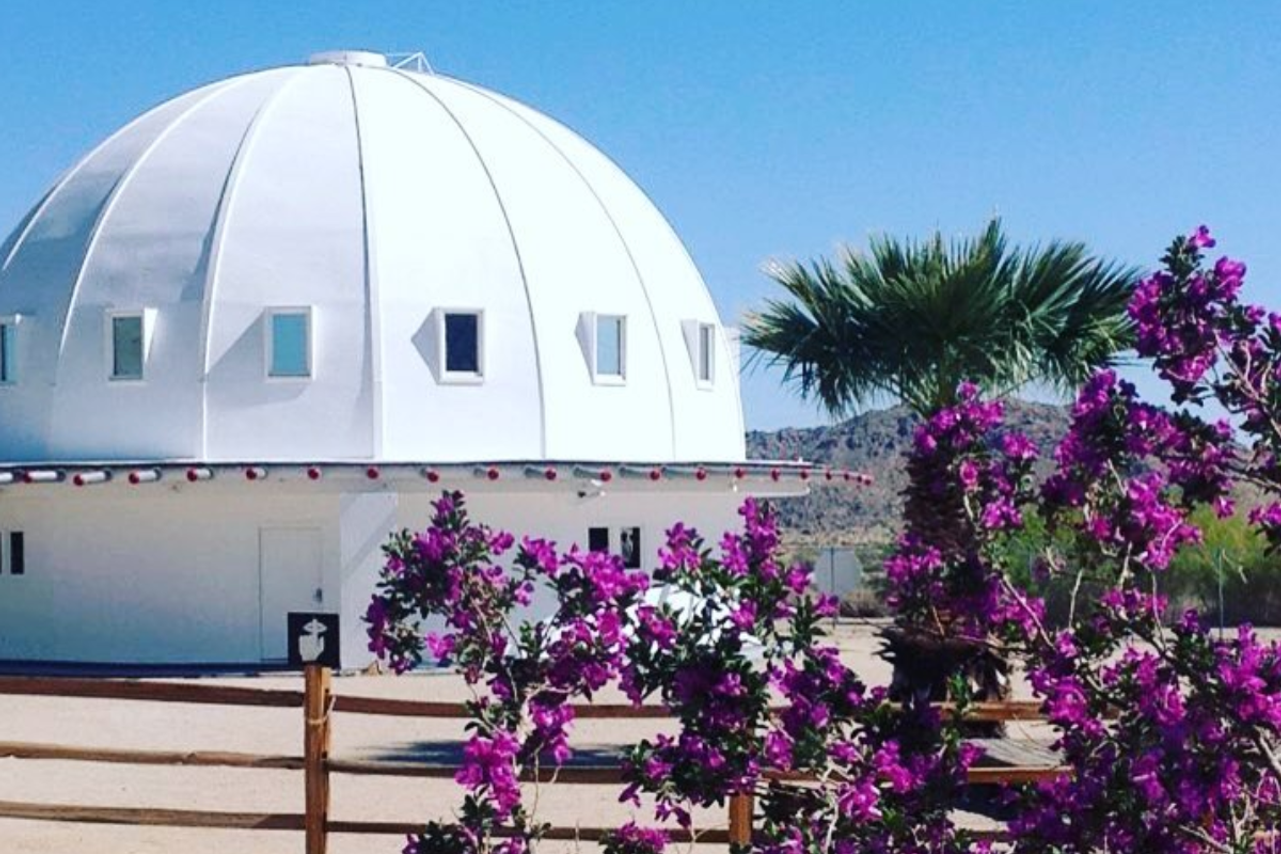
5. The Integratron
Today, this white dome hosts sound bath spa treatments, but it has a storied past and a vaguely extraterrestrial bent. It was the brainchild of George Van Tassel, who claimed that a ship from Venus touched down at Giant Rock in 1953, carrying a 700-year-old being named Solganda, who let him in on a secret: The human body could be juiced up, like a battery, to stave off aging. Van Tassel spent years meditating beneath Giant Rock, in the warren that his friend Frank Critzer had excavated, and then got to work building a nearby structure that he claimed could generate electrostatic energy. The current owners of the Integratron make no promises of alien encounters or immortality, but visitors can make a reservation to spend an hour reclining on striped mats, listening to sound coaxed out of quartz crystal bowls as history echoes around them.
2477 Belfield Blvd, Landers, CA 92285

6. The Ruins of Ryan Ranch
A trip to Joshua Tree National Park is worth it just for a glimpse of its famed Seussian yucca plants, stacked boulders, and cholla cacti—but in addition to its natural treasures, the park has archaeological ones, too. For proof, stop by Ryan Ranch. Though it’s in the shadow of the steep Ryan Mountain, this trail is one of the park’s easiest hikes. The surface is nearly flat, which is fine: You’re not here to get your heart pumping. Your goal is to soak up the history hiding in plain sight.
Your destination is a set of adobe ruins that aren’t easily visible from the start of the trail. Follow it, and you’ll come right up to them, the most obvious relics of an estate built here at the end of the 19th century by J. D. Ryan, who operated the nearby Lost Horse Mine. Much of the six-room main house burned down in the 1970s, in an act of suspected arson. It still warrants a visit, if only to see how the creamy beige remains evoke the hues and humps of the rocks beyond them. If you stand in the “doorways,” it’s easy to imagine the astonishing view that the family woke up to more than a century ago.
Twentynine Palms, CA 92277

7. A Collection of Crocheted Curios
As you leave Joshua Tree through the West Entrance, off of Highway 62, you’ll be in prime position to pull over and check out the teeny-tiny World Famous Crochet Museum. Inside a lime-green photo processing hut, you’ll find a collection of plush poodles, melons, mermaids, and more—all adoringly arranged by Shari Elf, who has been acquiring them since the 1990s. If you’re itching to get your hands on your own cozy souvenir, pop into the nearby shop, brimming with hats, tunics, and more.
61855 CA-62, Joshua Tree, CA 92252
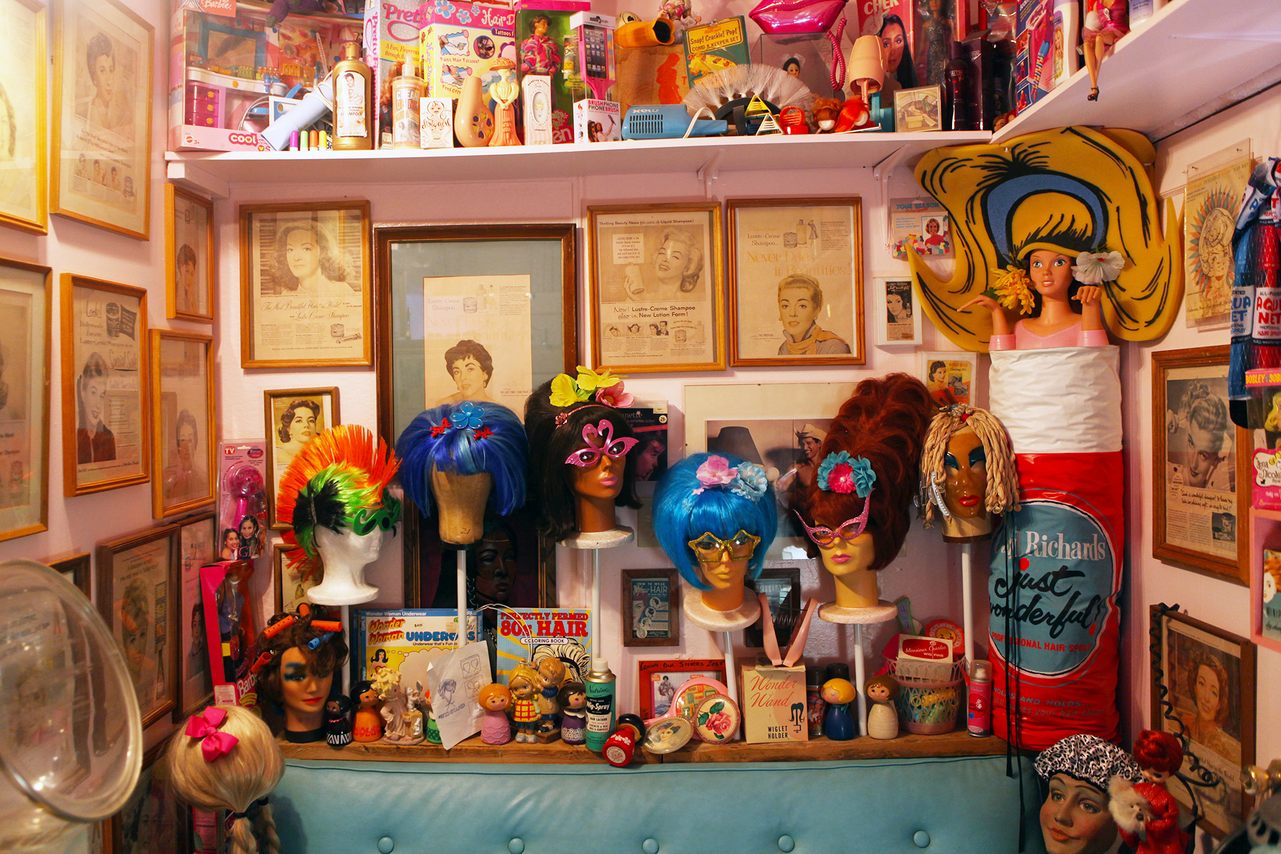
8. Beauty Bubble Salon and Museum
After the Crochet Museum, walk on over to this love letter to bouffants and the tools that make them soar. Painted bubblegum pink and various hues of blue and mint, the Beauty Bubble Salon and Museum is crammed with curlers, old-school dryers, and much more. Stop in for a quick history of hair styling—or if your own ‘do needs a little freshening up, call ahead for an appointment.
61855 Twentynine Palms Highway, Joshua Tree, CA 92252
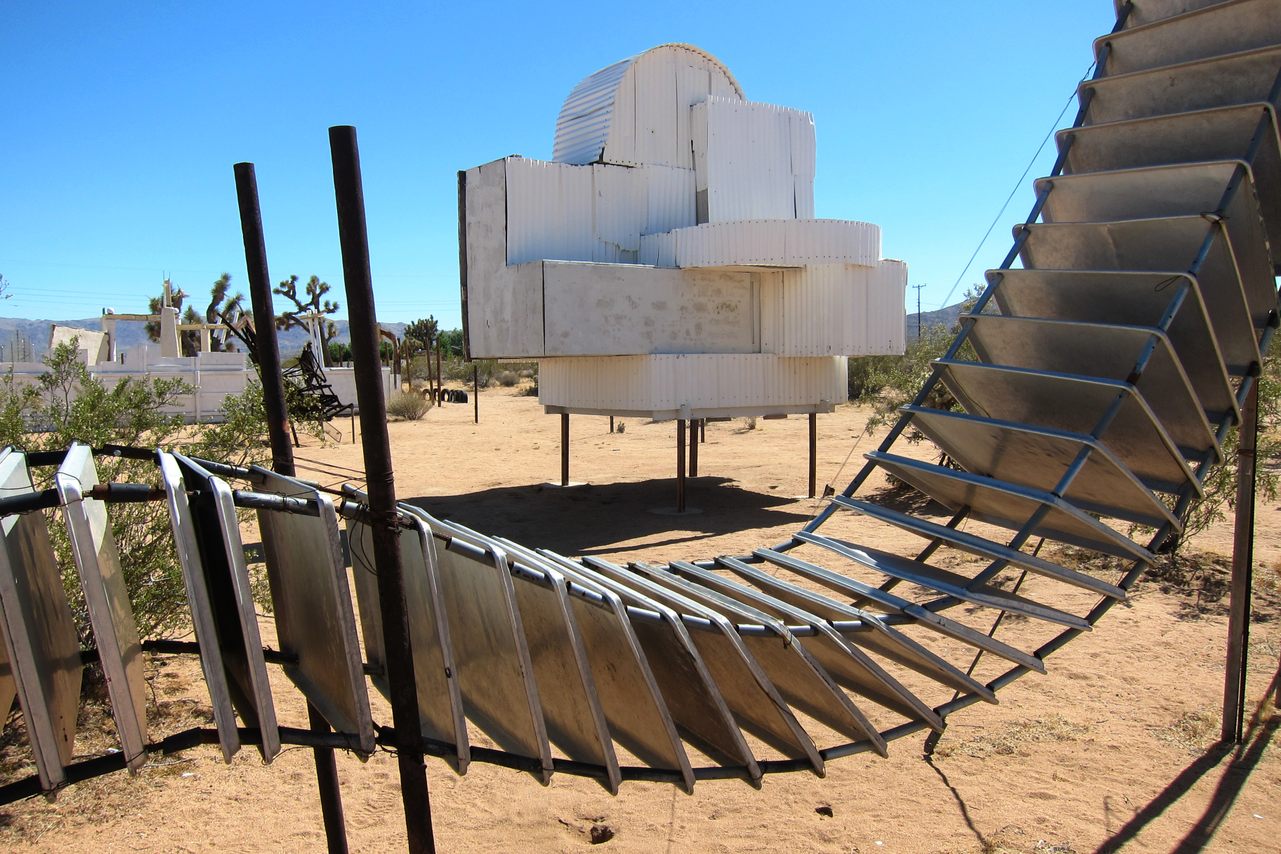
9. Noah Purifoy Desert Art Museum
The Alabama-born artist Noah Purifoy, who died in 2004, spent the final 15 years of his life arranging more than 100 of his sculptures and installations across several acres of desert. He worked almost exclusively with found objects, including salvaged, charred debris from the 1965 Watts Riots in Los Angeles. Here, plywood, white bricks, and rusting parts almost blend in with the sand and scrubby plants. Exposed to wind, rain, and the straight-on sun, the sculptures change over time. No matter: Purifoy embraced entropy, and visitors have to do the same. Arrive with a curious mind, and you’ll reap plenty of rewards.
63030 Blair Lane, Joshua Tree, CA 92252

10. Salton Sea Visitor Center
Come for the inland sea, stay for the wacky story about how it got there and the push to protect it. This mightily saline body of water—even saltier than the Pacific Ocean—was an engineering accident. In the rainy spring of 1905, the Colorado River rushed through the canal gates built to hold it back, flooding the Imperial Valley. This had happened several times in the past, but this time, it stuck. It took engineers roughly a year and a half to stem the flow, and in the meantime, water continued to pool at 227 feet below sea level. Today, the sea is fed by agricultural runoff. Some naturalists worry that if it continues getting saltier, many of the white pelicans and other birds that use it as a place to fuel up during migration may be out of luck.
Skip the eerie ruins of abandoned buildings chapped and flaking in the desert and check out the criminally underrated visitor center, where a pelican skull, with its long, sharp bill, is sure to leave you slack-jawed. If you’ve got a steel stomach, don't miss a slew of “Salton Sea Hush Puppies” near the window. (The charming name describes globs of waxy, insoluble fat formed when untold numbers of tilapia died at the same time in the briny water.) Then, make your way down to the beach. With each step, you’ll kick up sharp little backbones and barnacles that almost look tinted purple or dusty rose. Sit for awhile on the sun-battered picnic tables, surveying one of the prettiest infrastructure mishaps around.
100-255 State Park Rd, Mecca, CA 92254

11. Dos Palmas and San Andreas Springs Palm Trees
Both San Andreas Springs and its neighbor, Dos Palmas, evoke secret gardens, filled with nothing but native California fan palms with fronds that fall down like shaggy skirts. When you arrive, park your car and wind your way down a tidy, sandy path. It will feel like you’re veering off in the wrong direction, but trust the twists and turns and you’ll land smack inside a grove of trees. There, you’ll be enveloped by fronds and the smell of damp dirt. In the precious, secluded solitude, it might feel like you’re breaking some rule—how could something so beautiful be so empty? It’s simply under the radar: This property is managed by the Bureau of Land Management, but open to visitors. Be sure to leave things as you found them, and don’t get in the way of the work.
Palmas Spring Rd, Mecca, CA 92254

Queens
New York City's most diverse borough is also its most rewarding.
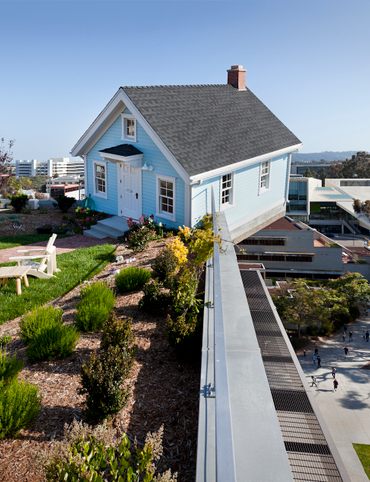
San Diego
Southern California's second city holds plenty of sparkling secrets.

Savannah
Find surprises around every corner in a U.S. city that embraces history like no other.
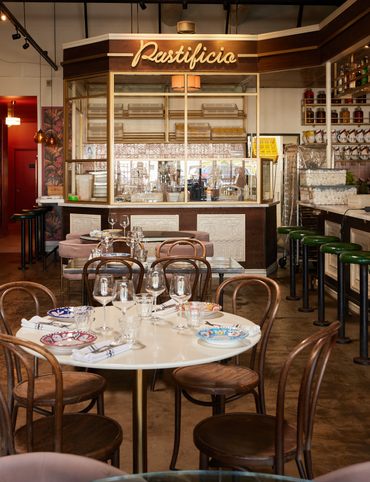
A Gastro Obscura Guide to Family-Friendly Dining in San Diego
Sponsored by San Diego Tourism
In San Diego, a city on the sea just over the border from the coastal state of Baja California, the freshness of the food leaps off the plate, thanks to chefs who are constantly finding new ways to turn local produce and seafood into something delectable. The city’s history, heritage, and proximity to Mexico—combined with the fresh, simple flavors of California cuisine—create a cross-border culinary identity known as Cali-Baja. It’s not just a fusion, but a lifestyle rooted in variety and simplicity. While San Diego has a long and celebrated tradition of excellent Mexican food—from street tacos to aguachile—that’s just the beginning. The city’s diverse neighborhoods each bring something unique to the table: hand-pulled noodles in Convoy District, beachside burgers in Ocean Beach, artisan pasta in Little Italy, and seafood-forward small plates in La Jolla. The commitment to bold flavor and local ingredients is unmistakable. And thanks to year-round sunshine and a laid-back beach culture, great food is easy to find and even easier to enjoy. This diversity of cuisine, paired with an adventurous, open-hearted spirit, makes America’s Finest City a standout destination for curious eaters and families alike.
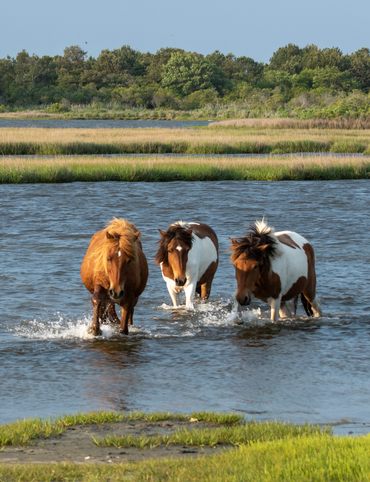
The Explorer’s Guide to Outdoor Wonders In Maryland
Sponsored by Visit Maryland
With wild horses, a small elk called a “sika,” a massive population of bald eagles, and the once-endangered fox squirrel, the state of Maryland is home to a thrilling variety of wildlife. Across diverse ecosystems like swamps, cliffs, mountains, and sandy beaches, the state springs alive during spring and summer with the sounds of birds, mammals, amphibians, and reptiles that the state has been careful to protect. Perfect for outdoor enthusiasts, these parks, preserves, and protected areas across Maryland offer visitors a chance to encounter fauna they may have never even known existed.
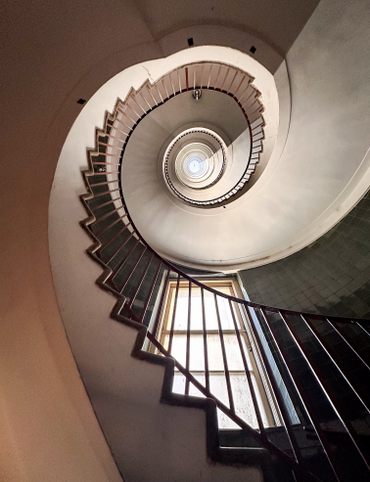
The Secret Lives of Cities: Ljubljana
How many times can a city be called a “hidden gem” before it stops being hidden? Judging by the enthusiastic throngs wandering its cobbled Baroque streets in summer, Slovenia’s capital has certainly been discovered, but perhaps by the wiser tourists. Though it is popular it is never overcrowded, and each visitor who falls for its charms (and they inevitably do) feels as though they’ve stumbled upon a secret treasure. Perhaps this lingering sense of discovery comes from its tricky-to-pronounce name (Loo-blee-ah-nah) or the fact that Slovenia only gained independence from Yugoslavia in 1991, making it feel newly accessible to many travelers. But this very quality is part of its appeal—Ljubljana is a city full of surprises. It’s unexpectedly elegant and prosperous (historically the most developed of the former Yugoslav capitals), remarkably easy to visit , impressively green (a former European Green Capital with the highest percentage of pedestrianized streets in Europe), surprisingly well-connected, and effortlessly cool. With a quarter of its 300,000-odd inhabitants being students, Ljubljana has a vibrant, youthful energy combined with refined Central European charm. Though often grouped with “Eastern Europe,” all of Slovenia actually lies west of Vienna, which was historically its greatest influence, having been part of the Habsburg Empire for centuries. The city center is compact, highly walkable, and photogenic, with minimal Socialist-era architecture disrupting its Old World atmosphere—unlike sister cities such as Belgrade. And then there’s its stunning backdrop: a 30-minute drive north, the snow-capped Alps rise majestically above the skyline. Spend just a few hours in Ljubljana, and it will come as no surprise that its name translates to “beloved.”
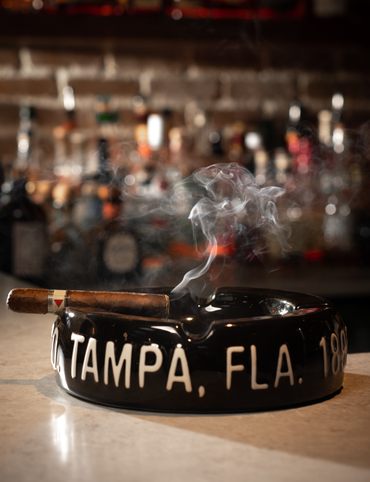
From Cigar Boom to Culinary Gem: 10 Essential Spots in Ybor City
Sponsored by VISIT TAMPA BAY
In Ybor City, the past and present blend like the perfect café Cubano—rich, bold, and impossible to resist. Situated just northeast of downtown Tampa, Florida, the enclave was founded when Cuban cigar entrepreneur Vincente Martinez-Ybor opened a factory here in the 1880s. That one business move created a boom for cigars (at its height, Ybor City had more than 200 cigar factories), prompting an explosion of lodging, restaurants, shops and nightclubs. Today, it’s still a haven for vibrant cultural touchpoints that blend its Cuban roots with Floridian, Spanish, Italian and global influences from farther-flung locations. On its charming streets, guests will find Cuban eateries ranging from traditional to creative, and cigar shops (and even a working factory) that retains the spirit of its past. From picadillo to hand-rolled cigars, Ybor City has plenty of treasures to offer. A word to the wise: Come hungry for discovery.
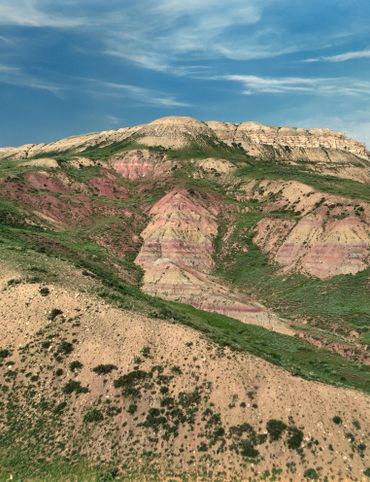
The Explorer’s Guide to Wyoming’s Captivating History
Sponsored by Travel Wyoming
From legendary outlaw hideouts and prehistoric fossil beds, to a centuries-old Native American rock formation and a critical landmark along the Oregon Trail, Wyoming is packed with storied sites worth seeing. Here’s 10 fascinating stops to get you started.

A Nature Lover’s Guide to Sarasota: 9 Wild & Tranquil Spots
Sponsored by Visit Sarasota County
With its endangered Florida scrub jays, athletic bobcats, fields of colorful wildflowers, and eerie mangrove tunnels, southwest Florida’s Sarasota County is far from one note. While it offers the requisite Sunshine State landscapes of pristine beaches and lapping waves, there’s so much more for nature lovers to see and experience. With 725 square miles—including 35 miles of beachfront overlooking the glittering Gulf of Mexico—Sarasota County has varied landscapes that support all manner of wildlife. Whether you’re looking for a low-key stroll beneath moss-draped trees, the rush of seeing hundreds of alligators converging in one place, or an exploratory horseback ride, this extraordinary area has you covered. Here, we’ve rounded up nine can’t-miss Sarasota stops, so get ready for the ultimate outdoor lovers’ excursion. Trust us: Sarasota County hits all of the high notes.
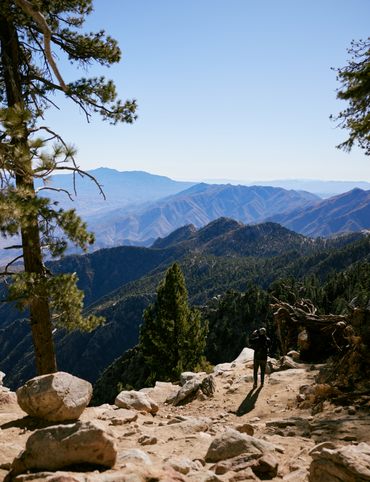
California’s Unbelievable Landscapes: A Guide to Nature’s Masterpieces
Sponsored by Visit California
California is a land of dramatic landscapes. It has mountains, volcanoes, sweeping deserts and seashore galore; its natural splendor even extends below the surface of the earth, to cavernous caves and man-made underground gardens. Many of its geological and biological wonders will make you feel like you’re on another planet, or like you’ve been transported to a storybook where trees speak, shrink, or live forever. Whether you’re eager to explore volcanic history, surround yourself with walls of glistening ferns, or summit mountains to see twisting trees and desert views, in California, the most unbelievable landscapes are just around the corner.
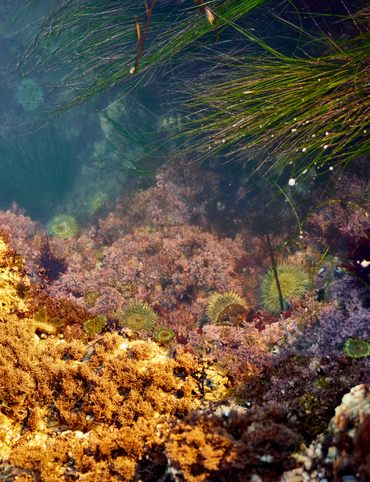
The Ultimate California Guide to Tide Pools and Coastal Marine Life
Sponsored by Visit California
California’s long coast is beloved by surfers, sure, but it’s also a hotbed for another sort of sunny activity: tide pool exploration. At low tide along California’s shoreline, pools of tiny living wonders appear – home to sea stars, urchins, spiny lobsters, slugs, shells and flowing bits of algae. We’ve rounded up some of the best tide pools in the state, to inspire the budding marine biologist in all of us. Know Before You Go Before you begin your tide pool adventure, there are a few things you should know. 1. First, check the tide schedule before you set off for the beach, as most of these tide pools are only visible at low tide. (Fall and Winter are usually the best seasons for this sort of exploration, as the tides are lower.) 2. In order to preserve the wild world of nature that exists inside each tide pool, you should never remove any animals from their habitats; some state parks even forbid touching the animals inside the tide pools, so follow the local rules at every stop along the way.

Explore California on Foot: Nature’s Year-Round Playground
Sponsored by Visit California
For those of us who live in colder climates, California can seem a legitimate dream: sunny beaches, temperate mountain vistas, and awe-inspiring desert landscape. In every season, the Golden State is rife with opportunities for strolling, hiking, and rambling through its diverse climates and thrilling geographies. You can walk breezy beaches and see a waterfall that crashes directly into the sea, climb the country’s highest sand dunes, explore a glistening green canyon, or even go subterranean. Whatever you choose, we’ve collected 10 great ways to see the state on foot.
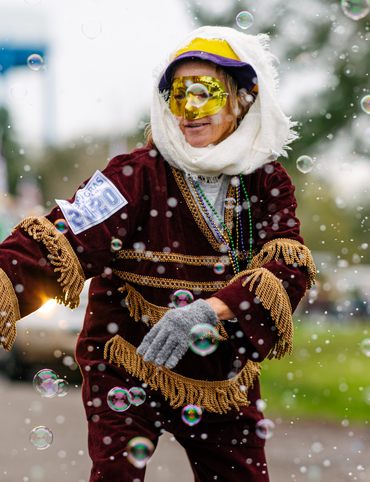
Mardi Gras 9 Ways: Parades, Cajun Music, And Courirs Across Louisiana
Sponsored by Explore Louisiana
There’s more to Mardi Gras than the raucous parade on Bourbon Street. Travel outside New Orleans and you’ll find a diverse array of celebrations ranging from the traditional Courir de Mardi Gras to a sustainable parade with no plastic (and no barriers). Each is unique, and most are more family-friendly than NOLA’s well-known Bacchanal. We’ve compiled some ideas for celebrating the holiday while dancing, while supporting a good cause -- and even while getting up close to some swamp creatures. Get ready to see what Louisiana has to offer.
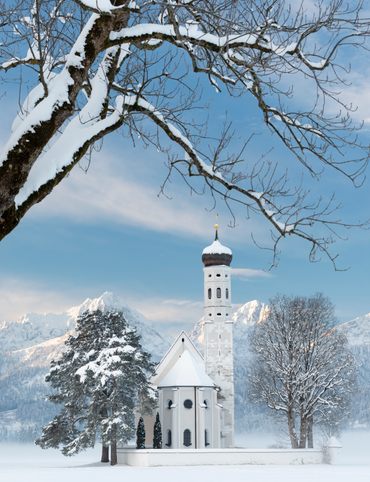
The Explorer’s Guide to Winter in Germany
Sponsored by The German National Tourist Office and Lufthansa
In Germany, the winter holidays are a gift that never stops giving. From Christmas markets to skiing adventures in the Alps, the country’s main seasonal attractions are well known, but the cooler months of December to March also offer much more off the beaten path. Hidden snowscapes, markets, and manors straight out of the Brothers Grimm books promise a unique turn to the wintertide. Here are some of the best, lesser-known places for outdoor fun and indoor warm-ups across the country. And if you’re ready to book your next trip, Lufthansa operates direct flights from 20 U.S. cities to Germany, making it easier than ever to plan the perfect German winter adventure.
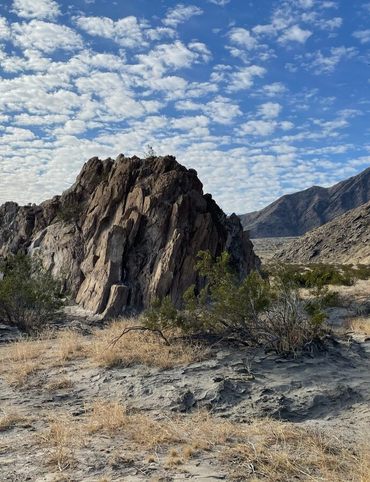
Ancient California: A Journey Through Time and Prehistoric Places
Sponsored by Visit California
What makes California an absolute playground for prehistoric artifacts? Is it because so much of the state is undeveloped desert? Is it because the entire state was once a warm, shallow sea roughly 500 million years ago? Or is it because California was home to some of the earliest human settlements in North America? If you answered “all of the above,” you’re correct! Here in California, the distant past has a habit of poking its nose into the present in weird and wonderful ways—the stops on this prehistoric itinerary will show you why.

The Wildest West: Explore California’s Ghost Towns and Gold Fever Legacy
Sponsored by Visit California
Once gold was discovered in the deserts of the American West, people from all over the world converged there in the middle of the 1800s. It took some time, however, for law enforcement and civil society to catch up—hence the period of American history now dubbed “the Wild West.” While the gold is gone and the desert towns of California’s interior are now calm, law-abiding communities, that historical spirit lives on in the towns, architecture, and museums along this daring itinerary. This is the Wild West like you’ve never seen it before.
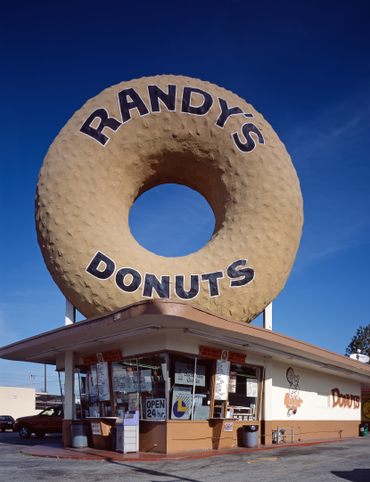
Sweet California: A Culinary Guide to Tasty Treats Across the State
Sponsored by Visit California
Many different cultures have called California home over the years, from the Chinese to the Dutch to the Japanese, and what they all had in common was an insatiable sweet tooth. This delicious itinerary explores this legacy in the form of fortune cookies, sodas, donuts, cupcakes, and more. Finish your dinner—you’re definitely going to want what California’s got for dessert!

Sea of Wonders: An Itinerary Through California’s Stunning Shoreline
Sponsored by Visit California
With shoreline from end to end, it’s no wonder California has some of the wildest marine excursions, architecture, and animal life in the country. Grab your surfboard, pack your binoculars, and bring a towel—there’s a world of wonder packed in this itinerary along California’s curious coastline.
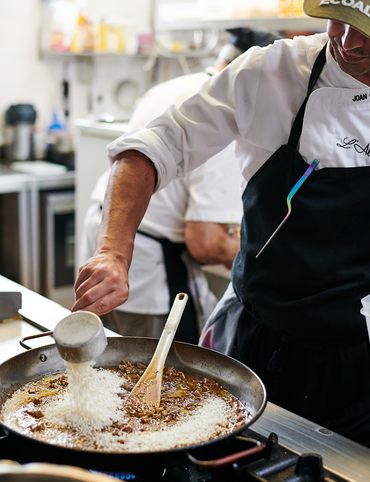
10 Places to Taste Catalonia’s Gastronomic Treasures
Sponsored by Catalunya
When it comes to food, Catalans do it better. Despite having a population of just over eight million—smaller than the state of Virginia—the region is home to 54 Michelin-starred restaurants, 12 designated wine regions, and nine official wine routes. Catalonia also has more than four million acres of farmland, with many of its 54,000 farms adhering to organic practices. But to understand Catalan food culture, you must look beyond the statistics: to the secret herb formulas for making vermouth and the family recipes passed down through generations; the ancient rice paddies, olive mills, and an entire tradition built around a humble vegetable, the calçot. You’ll need to look, too, to the people of Catalonia, whose deep-rooted love of all things gastronòmica means that every moment of the day, week, or year is a potential culinary celebration. Here’s where and how to experience 10 of the best Catalan food traditions on your next visit to the region.

Atlas Obscura’s Guide to Palm Springs
Sponsored by Visit Palm Springs
A paradise in the desert, Palm Springs is a city of contrasts. Kitsch sidles up to luxury, natural beauty serves as the backdrop to architectural marvels, and when you soak in an ancient hot spring, you might catch the latest TV star doing the same. One of the biggest contrasts is this: while Palm Springs is a beloved vacation spot, it still holds lesser-known wonders waiting to be discovered. Looking for something you’ll find nowhere else? Head down a nondescript residential street and find an army of enormous pink robots. If you’ve got a case of the shoppies, there’s an antique mall to explore and an artist community full of galleries and studios. If you want to learn about the area’s human history, look no further than the Agua Caliente Cultural Plaza (and take a soak in the spring-fed waters while you’re at it). Natural areas allow you to explore canyons and waterfalls; restaurants and bars let you feel like you’re flying on a midcentury airline or in the audience of a vintage game show; heck, you can even get up close and personal with a windmill farm. And if you’d rather just see all of it from above, you can ride the world’s largest rotating tram car from the desert floor up to the San Jacinto Mountains. The question isn’t “Does Palm Springs have something for me?” but “How am I going to fit it all in?” Start with this list.
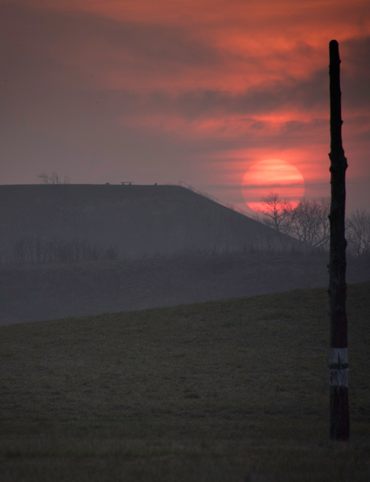
Atlas Obscura’s Guide to the 10 Most Mystifying Places in Illinois
Sponsored by The Illinois Office of Tourism
A presidential tomb that carries endless drama. A thriving prehistoric society that vanished without a trace. A haunted fun house with a wine cellar apparition.When you think of Illinois, you probably don't think of mysterious mounds, creepy clowns, and a park filled with dragons and wizards. We figure it’s time we changed that. Jump in and join us for a whirling tour through some of Illinois’s most inexplicable, unexpected, and unsuspecting sites.
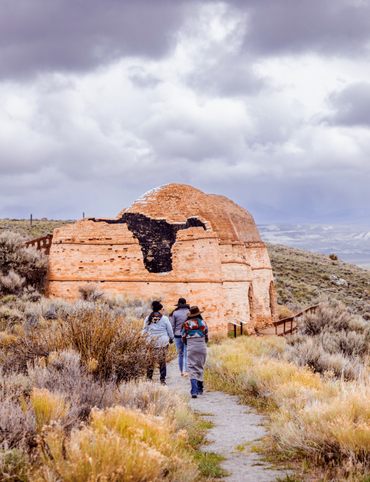
10 Fascinating Sites That Bring Idaho History to Life
Sponsored by Visit Idaho
From its remote log cabins and carbonated natural springs to the tale of how the Nez Perce people came to be, Idaho is a land brimming with curious wonder. There’s so much to see and do in this northwestern state, whether it’s taking a drive along a 135-mile-long scenic byway dedicated to Sacajawea—the only woman to accompany Lewis and Clark on their historic expedition—or discovering the history of the Basque people at a museum that sits smack dab in the middle of the largest Basque community in the US. We’ve rounded up 10 captivating sites that help bring the incredible story of Idaho to life—get ready for the ultimate road trip.
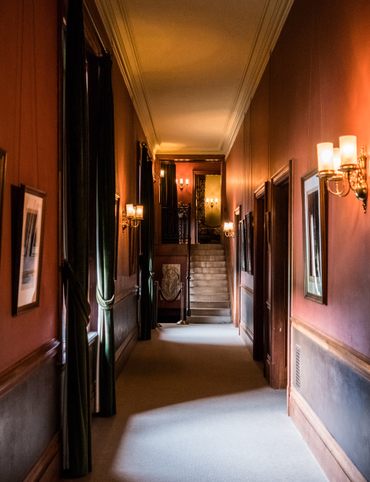
North Carolina's Paranormal Places, Scary Stories, & Local Haunts
Sponsored by Visit North Carolina
With its wooded mountains, industrial history, and wide, sweeping bluffs, North Carolina is a surprisingly haunted state, an ideal site for lingering ghosts and bumps in the night. While many visitors flock to the esse Quam Videri State for pulled pork barbecue, pristine beaches, and towering mountains, it’s also rich in hauntings, and perfect for a ghost tour. In the Appalachian mountains, you’ll find a Vanderbilt mansion with spooky hidden passageways; in Cape Lookout, you can take a ferry to a long-forgotten island village, home only to ruins and specters. And beneath the waters of the state’s largest man-made lake, you may just find a monster to rival that of Loch Ness. Below, we’ve collected the state’s best, spookiest, most haunted sites home to hidden histories.
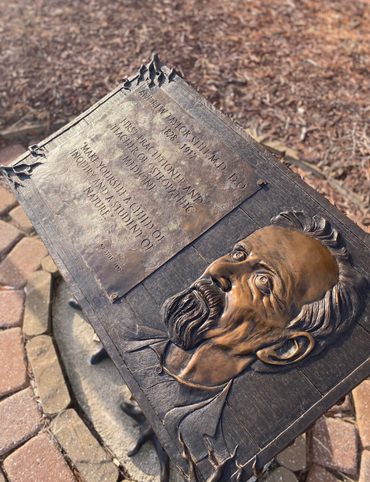
Exploring Missouri’s Legends: Unveiling the Stories Behind the State’s Iconic Figures
Sponsored by Visit Missouri
A world-famous animator. A Wild West outlaw. The patron saint of prairie literature. And an iconic, mustachioed novelist. These are just a few famous residents of Missouri’s history. Across the state, homes and museums and gardens have been preserved and dedicated to these beloved Missourians. You can tour the childhood homes of Walt Disney and Mark Twain, visit the homestead where Laura Ingalls Wilder wrote the Little House books, and visit a penitentiary where world heavyweight boxing champion Sonny Liston learned the sport. The “Show-Me” state is full of history everywhere you look, much of it tied to the lives of the people who lived, worked, and made art here.

These Restaurants Are Dishing Out Alabama’s Most Distinctive Food
Sponsored by Sweet Home Alabama
You could easily spend a month eating through Alabama’s restaurants, from fish shacks to fine dining havens, and barely scratch the surface. Thanks to its position on the gulf coast and its long growing season, the state is brimming with delicious cuisines, both traditional and forward-thinking. One day you may be digging into perfectly-fried fish in a refurbished camp along the coast, and the next you might be drinking a glass of local beer paired with a locavore salad set atop a white tablecloth. From its signature barbecue sauce to its gulf shrimp to the unique creation that is West Indies Salad, Alabama is an eater’s paradise. Here are some of the restaurants dishing up the state’s signature meals.

A Gastro Obscura Guide to Los Cabos
Sponsored by Los Cabos Tourism
The innovative mix of Mexican, Mediterranean and Asian-inspired flavors and cooking techniques has created a delectable fusion, “Baja-Med.” Food is the conduit to creating community here, among local farmers, fishermen and restaurant entrepreneurs; and with visitors who are open to experiencing the richness of the land and culture via exquisite tastes, sensory immersion, and creative presentation.
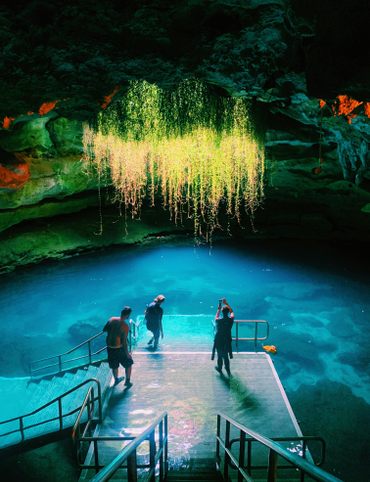
9 Watery Wonders on Florida’s Gulf Coast
Sponsored by VISIT FLORIDA
With all its tidal pools, mangrove islands, and estuaries, Florida’s Gulf Coast shoreline is one of the most dynamic in the country. Throw into the mix almost a thousand natural springs, and Florida truly is a place with as much to explore both above water as below. This ten-stop itinerary is by no means exhaustive. The mermaid shows, cave-diving, underwater museums, mangrove-kayaking, and wildlife-watching opportunities presented here still only scratch the surface – and the depths - of the myriad activities possible along this wondrous coastline.
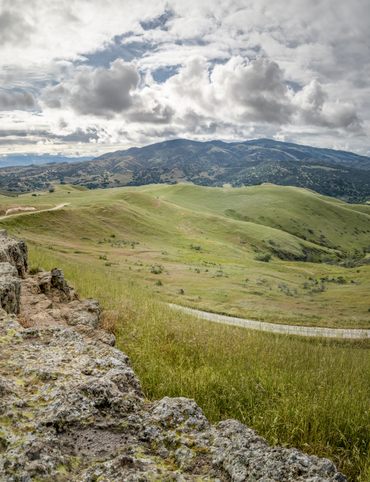
Discover the Surprising and Hidden History of Monterey County
Sponsored by See Monterey
Monterey County, nestled on California’s stunning Pacific Coast, is a treasure trove of lush landscapes and breathtaking ocean views. But beyond its natural beauty lies a rich tapestry of human history waiting to be explored. Hike a National Historic Trail while learning about the area's Indigenous communities; watch a thrilling race at the storied Laguna Seca Raceway; and get lunch at a restaurant that epitomizes the Oaxacan presence in Monterey. This itinerary will take you to museums and reserves across the county and its thousands of years of human history.

Gastro Obscura’s Guide to Eating Your Way Through Charlotte
Sponsored by Charlotte Regional Visitors Authority
In a city like Charlotte, it’s easy to stick to the new and the known. But dig deeper and you’ll find that the Queen City isn’t just a spot for barbeque and southern fare, but a melting pot with immigrants who dreamed of displaying the best of their culture on dinner plates and front porches. You’ll find that a taste of Italy is just as close as the corner store; you can experience the magic of dining inside an historic craftsman bungalow in one of Charlotte’s iconic neighborhoods. Hear from owners who have spent their lives here, cultivating menus that keep patrons coming back week after week for decades. Though driven by new growth, the charm of old Charlotte still exists in the corners of the city, and the flavors of global cuisine are sprinkled throughout, just waiting to be discovered. Let this guide be your culinary inspiration to go and try it for yourself.

9 Amazing Arkansas Adventures Along the Scenic 7 Byway
Sponsored by Arkansas Tourism
Spanning roughly 300 miles through the state of Arkansas, the Scenic 7 Byway is a road-tripper’s mecca. Dense pine woodlands in the south give way to the verdant Arkansas River valley, reaching the lush Ozark and Ouachita mountains. Dig for crystals, sample the state pie, explore natural formations, and soak in The Natural State’s rich culture and history as you stretch your legs at these worthwhile stops.
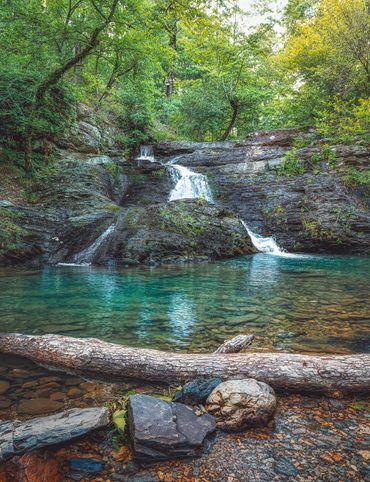
Talimena Scenic Byway: 6 Essential Stops for Your Arkansas Road Trip
Sponsored by Arkansas Tourism
The Talimena National Byway travels roughly 15 miles through western Arkansas to the Oklahoma line, meandering through the stunning Ouachita National Forest, Arkansas’ second-highest peak at Rich Mountain, and into historic Queen Wilhelmina State Park. Dig into small-town history, savor a juicy burger at a remote country store, and marvel at scenic overlooks and waterfalls along the way.
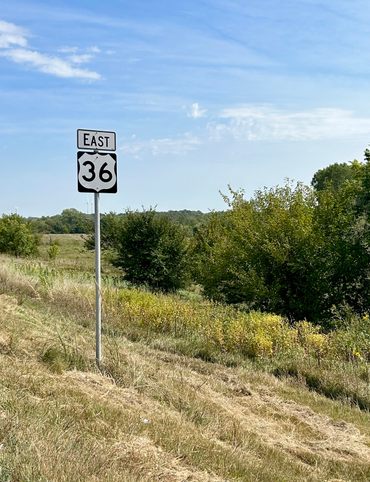
The Explorer's Guide to Highway 36: The Way of American Genius
Sponsored by Visit Missouri
Spanning the state of Missouri, from St. Joseph to Hannibal, Highway 36 is full of intriguing stops packed with incredible stories of innovation. Known as “The Way of American Genius,” the route highlights inventions and individuals who left a lasting mark. From the starting point of the Pony Express and the bakery that introduced sliced bread to magical towns that sparked inspiration for creative geniuses Walt Disney and Mark Twain, these spots along Missouri’s Highway 36 will leave any traveler dreaming of the next big thing.
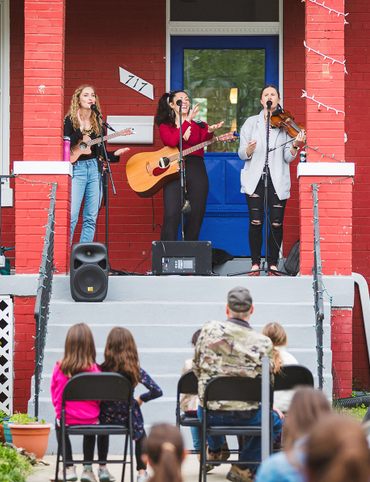
A Behind-the-Scenes Guide to DC’s Art and Music
Sponsored by Washington.org
For Washingtonians, there’s “Washington”—the well-known stretch of historic sites and cultural institutions that draws visitors from around the country to the nation’s capital—and then there’s the city they call home. That’s D.C., a patchwork of vibrant and diverse neighborhoods, each with their own rich history and distinct culture—alive with go-go music, locally made spirits, community conversations, and indie art. These are just a few of the landmarks locals know in Northwest D.C.—from the cycling path that leads to an artists’ community to a risqué mural that signals some of the best blues in the District.
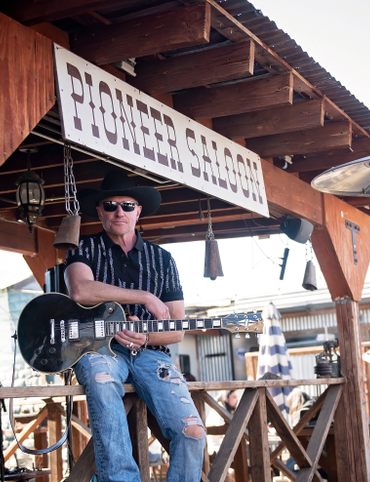
9 Places Near Las Vegas For a Different Kind of Tailgate
Sponsored by Travel Nevada
While Las Vegas is known for its glitzy neon signs, buzzing clubs and nightlife, and over-the-top casinos, the region itself is also home to some wondrous bars and eateries that lie well beyond the crowded Strip. This Super Bowl season, it’s time to engage in a new type of tailgate. From a stripmall world of tiki to a downhome diner where daily specials are part of the allure, here are 9 places that offer a culinary escape from the bright lights of Nevada’s most iconic city.
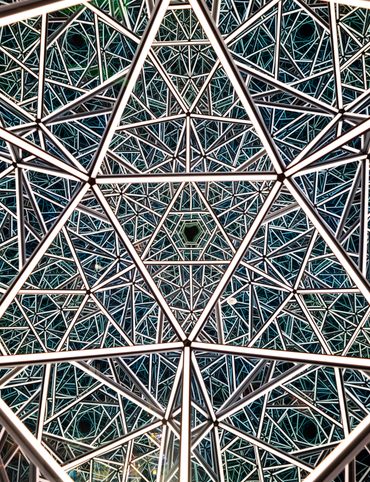
10 Places to See Amazing Art on Florida's Gulf Coast
Sponsored by Visit St. Pete/Clearwater
From whimsical private home tours to funky creative hubs, hands-on glass-blowing galleries, and lots more, there’s no shortage of alluring art attractions in St. Pete/Clearwater.

8 Reasons Why You Should Visit the Bradenton Area
Sponsored by Bradenton Area Convention and Visitors Bureau
Hugging the Manatee River, just south of Tampa Bay, Bradenton is a central Florida destination brimming with soul. At the annual Downtown Bradenton Public Market, peruse the goods of nearly 100 vendors and pick up beach-themed art, local coffee, gifts, jewelry, clothes, and much more. Equally diverse is one of the Bradenton area’s hippest neighborhoods, the vibrant Village of the Arts, home to nearly 20 funky art galleries, plus top-notch restaurants serving southern soul food and more. A sustainability-minded vintage shop and an authentic Italian café known for its fresh-from-the-garden pesto and daily baked breads are worthy draws, as is the Carnegie Library, with its packed corridors of historic county papers and artifacts. History buffs will also love to travel back in time at the Manatee Village Historical Park, with over 15 distinctive historical and replica sites, including a steam engine, general store, and blacksmith shop. And the sacred Native American burial grounds and countless encounters with Florida’s diverse wildlife inspires awe at the 365-acre Emerson Point Preserve. With its impressive variety of sites to see, places to eat, and things to do, Bradenton’s reputation as the Friendly City is equally welcoming. Here are 10 destinations to get you started on your next visit to the Bradenton area.

A Music Lover’s Guide to New Orleans
Sponsored by New Orleans & Company
Perched at the mouth of the Mississippi River, New Orleans has been a crossroads of cultures since its first indigenous inhabitants. Just over a century ago, the interplay of West African, European, and Caribbean influences in the Crescent City forged the signature sound of American jazz. Today, thanks to the culture bearers who have passed this musical tradition down over generations, you can still hear what those jazz geniuses were cooking up. What’s more, music infuses every part of life in New Orleans, from football games to funeral processions, parades to public parks. Here are 10 places to immerse yourself in the rich landscape of New Orleans’ musical scene.
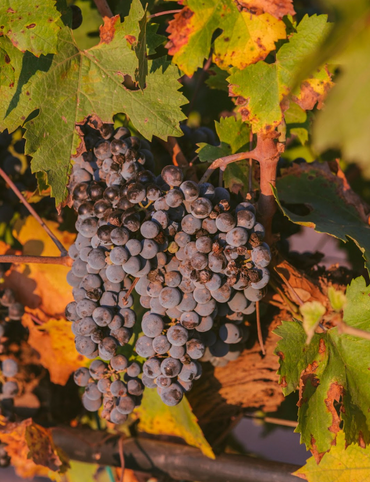
Gastro Obscura’s Guide to Sipping Wine in Catalonia
Sponsored by Catalan Tourist Board
Looking for a surprising and scenic backdrop to sip on some extraordinary wines? Enter: Catalonia. A less obvious choice than, say, Bordeaux or Tuscany, Catalonia has no fewer than 300 wineries spread across 12 designated regions (or denominaciones de origen) in an area the size of Maryland. That’s a lot of grapes per square mile. Nine wine routes have been specially developed to show off the best of each one. Here are 10 experiences in the DO Penedès Wine Route, the DOQ Priorat Wine Route, the DO Alella Wine Route, the DO Empordà Wine Route and the DO Pla de Bages Wine Route to explore some of the most quaffable wines in the region.
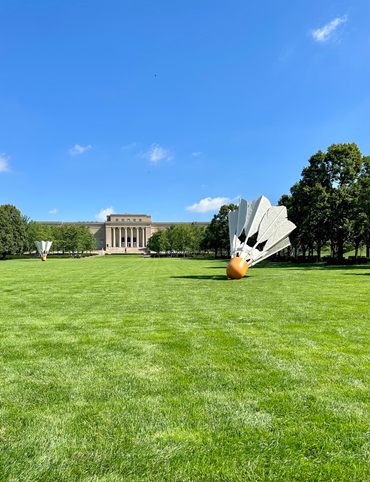
9 Hidden Wonders in the Heart of Kansas City
Sponsored by Visit KC
To soak in the soul of Kansas City, you can sink your teeth into succulent brisket burnt-ends, bask in the melodies of live jazz at one of the city’s legendary venues, or catch a thrilling Chiefs game– and that's just the beginning of uncovering its rich tapestry. But there’s another side to KC—under-the radar destinations that are packed with wonder and intrigue. Peel back a layer, and Kansas City reveals unexplored magic: from a holy finger housed in a world-class museum and a 70-year-old lunch counter that still keeps lines out the door, to the historic social epicenter of Black jazz and an original private-collection Winston Churchill work of art – and there’s even more waiting to be explored. Here are nine hidden wonders of Kansas City.

10 Unexpected Delights of Vermont's Arts and Culture Scene
Sponsored by Vermont Department of Tourism and Marketing
With its high peaks and verdant valleys, Vermont is meant for exploration. Go beyond its natural beauty and you’ll find the state’s creative side, in both historically notable institutions and the contemporary arts community quietly making wondrous work. This itinerary will take you from cherished museums to off-the-beaten-path cultural gems including a library and opera house that straddles the U.S.-Canada border, a collection of antiques that contains an 892-ton steamboat, and a Gothic church-turned-rock club. Through river towns and over mountaintops, you’ll see magnificent steel sculptures rise from rolling hayfields and expansive murals covering main streets. You’ll meet puppeteers and painters, dog lovers, and dreamers. So buckle up and wind your way to these 10 exciting art destinations that are sure to inspire your own creativity.

Gastro Obscura’s Guide to Eating Through Maine
Sponsored by Maine Office of Tourism
While lobsters, blueberries, and whoopie pies certainly come to mind when thinking about the edible wonders of Maine, they’re also just the tip of the iceberg. Stick to the headliners and you’ll miss out on some other uniquely Maine food and drink. Within the 3,500 miles of tidal coast, the quaint mountain towns, and nature-adjacent cities that make up the Pine Tree State, you’ll encounter off-the-beaten-path culinary settings including the only food truck park in New England, a Deer Isle sculpture park that sells jams and jellies, and a James Beard-nominated eatery operating out of a 100-year old dining car. You’ll meet one-of-a-kind food figures like the speech pathologist running a flour mill out of a former jailhouse, or an Amish deli run by a military-man-turned-chef out of a log cabin without electricity. And you’ll taste some of Maine’s lesser-lauded flavors, from seaweed jerky to maple syrup brandy and blueberry port. So do enjoy Maine’s revered blueberries, seafood, and baked goods. Just remember the myriad culinary curiosities also waiting in the wing for you.

The Gastro Obscura Guide to Asheville Area Eats
Sponsored by Explore Asheville
Asheville might be the best food city you haven’t visited. This mountain town in Western North Carolina has long been a destination for foodies–a self-proclaimed Foodtopia®–and beer lovers: thanks to the region’s rich culinary history, and the town’s quirky, creative soul, it has become a hotbed of culinary experimentation, top-notch microbreweries, and community-focused, farm-to-table food. Even better – it comes with a breathtaking mountain backdrop. Here are 10 places to explore some of the best food and drink in the region.
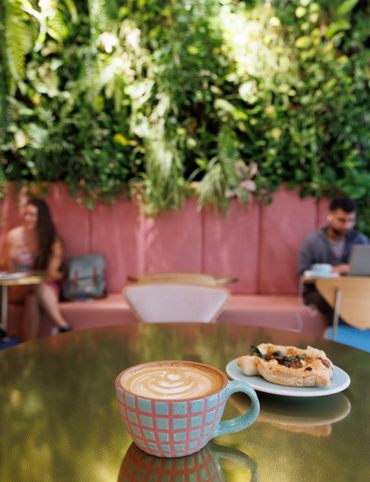
Gastro Obscura’s Guide to St. Pete/Clearwater
Sponsored by Visit St. Pete/Clearwater
A destination with thriving cultural cities, charming small towns, nature parks, and some of the top-ranked beaches in the country, St. Pete/Clearwater is the best of Florida all in one neat, welcoming peninsula. So welcoming, in fact, that the region is seeing a steady population growth that is fueling something of a cultural renaissance. The newcomers it’s attracting—in tandem with the locals who’ve been here all along—are building an eclectic community, with some unexpectedly tasty results. Out-of-towners arrive with creative business concepts like tropical Art Deco cafés or a pizzeria run by an acrobatic pizzaiolo. The local crowd reimagines long-standing structures, from a historic theater-turned-Roaring ‘20s nightclub to an ATM-turned-taco stand. And far-flung emigres weave strands of their home countries into the global tapestry that is St. Pete/Clearwater, from a British tea parlor to a French-Vietnamese restaurant serving two chefs’ childhood favorites. So by all means, come for the lively nightlife, the pristine beaches, and the wondrous museums. Just don’t forget to bring your appetite, too. Welcome to St. Pete/Clearwater.

9 Hidden Wonders in Eastern Colorado
Sponsored by Visit Colorado
Colorado is known for its towering mountains adorned with wildflowers, waterfalls, and endless hiking trails; however, some of its best kept secrets lie on the eastern half of the state. This adventure will take you to the furthest reaches of Colorado’s beautiful prairie and up into the pristine foothills of the Wet Mountains - all places seldom visited and teeming with intrigue. The locations below have been hand-picked for their uniqueness and ability to inspire you to journey through time via some of Colorado’s most obscure and interesting haunts found on the high plains.
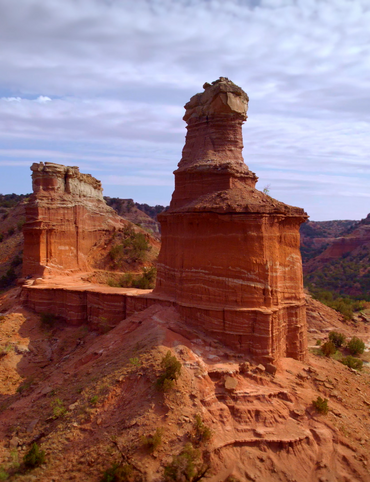
7 Places to Experience Big Wonder in Texas
Sponsored by Travel Texas
Texas is a wide-ranging, diverse, and expansive state. Even the barbecue you’ll get from one county to another is never the same, and the music sounds a little different in the depths of West Texas than it does in the panhandle. Texas is huge—you’ve probably heard that—and it offers attractions to match its size. We’ve rounded up our favorite places to see the heights and depths of Texas—from its tallest peaks to its heftiest steaks. Put on your ten-gallon hat and your tallest boots, and set out on a road trip that’ll help you get a sense of just how big the state really is.
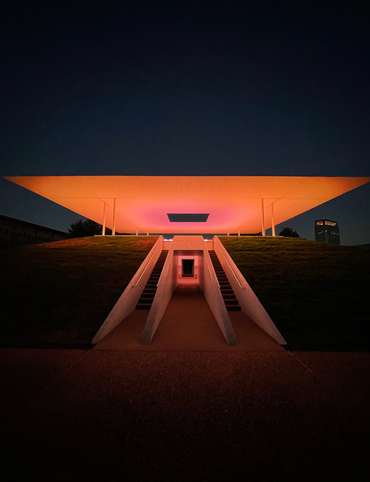
8 Out-There Art Destinations in Texas
Sponsored by Travel Texas
A surplus of space always means a surplus of creative possibility. Texas, with its never-ending skies, wide deserts, and even bigger imaginations, takes this idea to thrilling conclusions. If you’re interested in planning an art-focused road trip, you won’t find a better destination than Texas, where one day you’ll be browsing an obsessive collection of outsider art, and the next day you’ll be walking through a hidden alley covered in umbrellas or beneath a neon skyscape. Here are eight of the most exciting art destinations in the state to inspire your mind and thrill your eyes.

6 Ways To See Texas Below the Surface
Sponsored by Travel Texas
One of the most thrilling ways to explore a new place is to go underground. Spelunking, or cave exploration, offers a completely different view: instead of seeing what’s been built up, you see what hides beneath. Texas, with its rich and varied geological history, has a wide collection of subterranean attractions. Say goodbye to above-ground reality for a while, and plan a trip exploring below the surface. Here’s how.

9 Places to Dive Into Fresh Texas Waters
Sponsored by Travel Texas
Texas summers don’t mess around: it gets hot around these parts. Which is why swimming holes are so important to the state’s residents—and, luckily, its geography. Around the state, you’ll find natural springs, waterfalls, lakes, and even mermaids to welcome you into fresh waters. Whether you’re planning a swimming-themed road trip or need a spot to cool off the next time you’re in the panhandle, these are our favorite places to splash around in Texas.
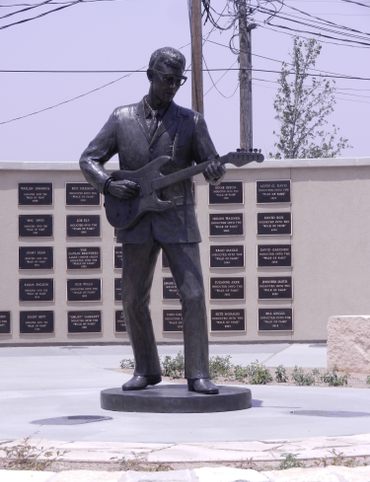
7 Ways to Explore Music (and History) in Texas
Sponsored by Travel Texas
Visit any honky tonk around the state and you’ll immediately know: Texans love their music. This is a state rich with musical history and musical culture, from the roots of country music to libraries dedicated to the preservation of historic gospel records. Below are some of the most interesting ways to experience music and sound in the state, whether you’re a country music lover or simply a traveler with curious ears.
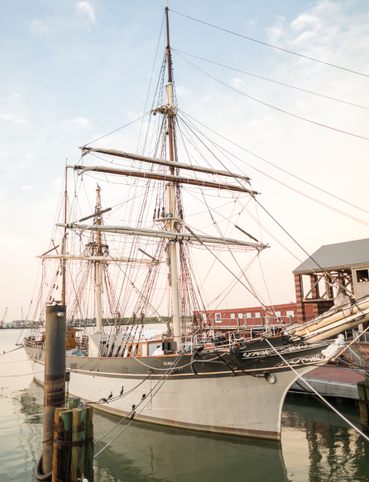
8 Ways to Discover Texas’ Rich History
Sponsored by Travel Texas
As the largest state in the contiguous U.S., Texas also holds a vast amount of the country’s history. While we all remember the Alamo, there’s also a trove of geological, cultural, and even gastronomic history among Texas’ wide skies and vast deserts. Here are some of the most exciting spots to learn about the state’s past, while enjoying its present.

The Explorer’s Guide to the Northern Territory, Australia
Sponsored by Tourism Northern Territory
The Northern Territory is home to rich Aboriginal culture that spans back around 60,000 years. The history, culture, and stories of the dozens of Aboriginal nations that make up the area are an intrinsic part of every experience you will have here.Located in the central north of Australia, the Northern Territory is three times the size of California, but has a population of only 250,000. It’s a land with a deep and sacred connection to its history, colorful deserts, and lush tropical rainforests. Visit the Northern Territory to experience the ancient wisdom of Aboriginal astronomers, sample unique bush tucker, and see creatures found nowhere else in the world.
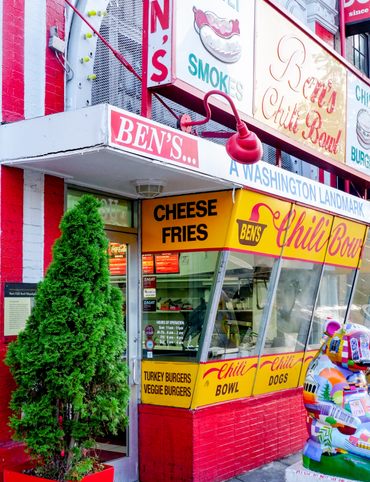
The Explorer's Guide to U Street Corridor
Sponsored by Washington.org
The U Street Corridor is an epicenter of art and African American heritage in Washington, DC. Once known as “Black Broadway,” U Street was the center of Black culture in America. (It’s where Duke Ellington was born!) Though the neighborhood struggled in the years following the 1968 riots, it’s as vibrant as ever today. Start your day on U Street at a mural honoring Black Americans from Harriet Tubman to Dave Chapelle, and end at a beloved Ethiopian restaurant where you might be lucky enough to catch some live music and dancing. Along the way you’ll grab a drink, uncover forgotten history, and stand inside theaters where everyone from Ella Fitzgerald to Nirvana have performed.

Gastro Obscura Guide to Southern Eats
Sponsored by Partners of Travel South
The American South is a mecca of delectable, comforting, and enduring cuisines from an array of cultures. Ranging from Creole to soul, and from Appalachian to Zimbabwean, our multi-state guide offers a unique tasting adventure that you won’t find anywhere else in the world. This itinerary blends some of the most iconic, lesser-known food stops across Louisiana, Mississippi, Tennessee, and North Carolina into one unforgettably tasty road trip.
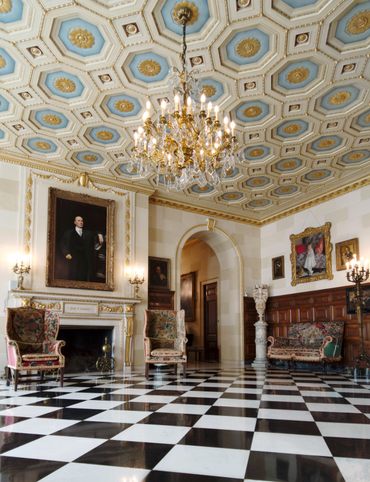
Only In Delaware
Sponsored by Visit Delaware
Delaware may not be the largest state in the country (in fact, it’s the second-smallest, and could squeeze into the next biggest state, Connecticut, two times comfortably). It’s not the most metropolitan, either (in fact, its capital city, Dover, is one of the least populated capital cities in the country). Delaware is, however, the oldest state in the country. The rich history therein, along with the natural beauty of the Blue Hen State and the unique characters who have called it home, make it a true hidden gem. From opulent family gardens to cannonball-riddled homes to fascinating defense structures, this itinerary will guide you through some of the state’s most extraordinary attractions. Beside outdoor activities like kayaking, horseback-riding, and fishing, there’s also historic homes, museums, and art installations of unthinkable scale. Sometimes, it’s true what they say—the best things do come in small packages. Welcome to Delaware.
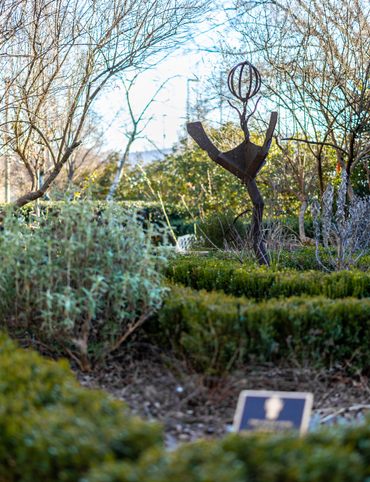
The Secret History & Hidden Wonders of Charlotte, North Carolina
Sponsored by Charlotte Regional Visitors Authority
At the heart of the south, Charlotte is a booming city full of new life. Cranes have dotted the skyline for more than a decade as it has become the most populous city in North Carolina. There is so much to see in Charlotte, from a rose garden hidden just outside the city center to a retro video rental store with over 30,000 titles. What many newcomers don’t know is Charlotte’s deep-rooted history that dates back to before the colonies became the United States. This list of 10 destinations will only scratch the surface of the many special places to visit in the Queen City.
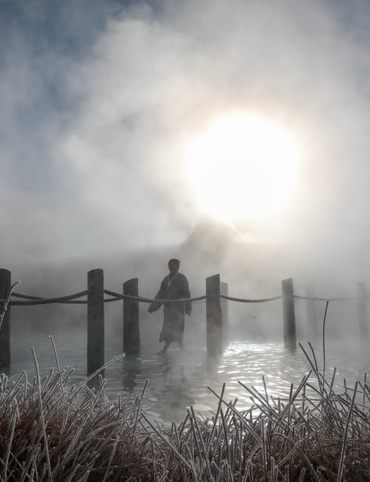
Exploring Colorado's Historic Hot Springs Loop
Sponsored by Visit Colorado
Nestled in the imposing Rocky Mountains of Colorado and the gorgeous high-alpine valleys, the Historic Hot Springs Loop is a treasure trove of geothermal hot spring resorts and destinations, offering visitors a chance to unwind and recharge in pristine natural mineral waters. The loop, which stretches from Glenwood Springs to Ouray, is home to an array of distinctive hot spring resorts, each with their own unique history, atmosphere, and therapeutic properties. From the luxurious spa-like feel of Glenwood Hot Springs with the world’s largest geothermal pool, to the rustic charm of Ouray Hot Springs with soothing vapor caves, there's something for every type of hot spring enthusiast.
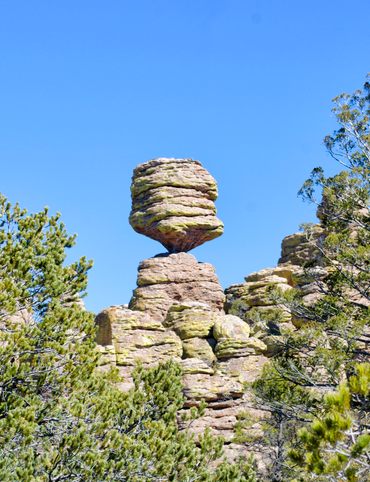
A Guide to Arizona’s Most Striking Natural Wonders
Sponsored by Visit Arizona
Arizona has some of the most beautiful and surprising landscapes the American West has to offer. The geography of this northeastern stretch of the Sonoran desert can be incredibly dramatic. And while we’ve all heard of—or seen—the majesty of the Grand Canyon, there are a number of lesser-known natural wonders that will take you off the beaten path in this gorgeous state.
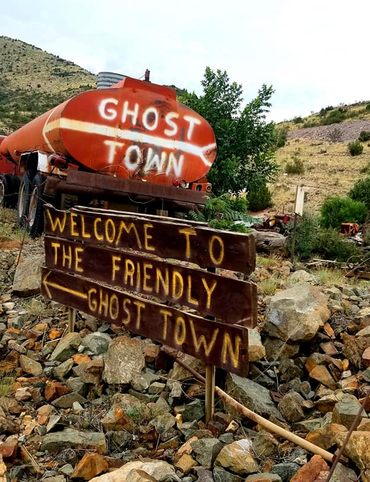
These 8 Arizona Ghost Towns Will Transport You to the Wild West
Sponsored by Visit Arizona
In the desert of Arizona, a string of ghost towns have been preserved and refurbished to give visitors a glimpse into the history of miners and the businesses who served them during the boom times of the turn of the century. Whether you want to pan for gold, discover junk art, or stay a night in a mining engineer’s cabin, these ghost towns will transport you into Arizona’s Wild West past.
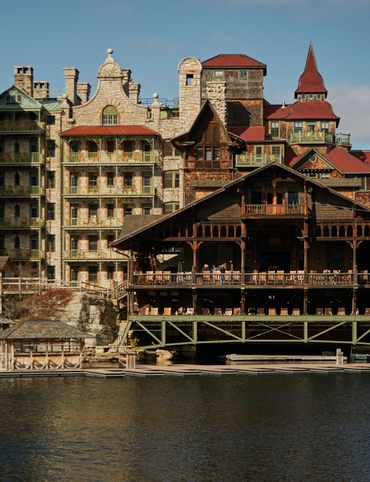
The Explorer's Guide to Hudson Valley, New York
Sponsored by Defender
Just a short trip north of New York City, the Hudson Valley is great for both day trips and road trips. Atlas Obscura co-founder Dylan Thuras is a local resident, and loves the natural wonders, as well as the incredible culture and history found in the region. This itinerary combines his favorite spots into one stunning road trip. Start your adventure at a living antique aviation museum near the historic town of Red Hook, and end with dinner at a Victorian resort. Along the way, you’ll make pit stops at towering waterfalls, a giant kaleidoscope, and incredible views of the beautiful Hudson Valley.
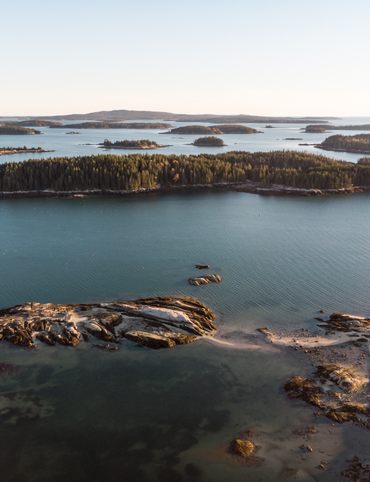
Discover the Endless Beauty of the Pine Tree State
Sponsored by The Maine Office of Tourism
When people think of Maine, it’s often the rugged beauty of the coast that comes to mind: sunsets over craggy shorelines, lighthouses surrounded by towering pines, and lobster boats dotting the bay. But whether you’re angling for a hike, paddle, or simply a long drive through the backcountry, there’s no shortage of spectacular natural features throughout all of Maine’s 16 counties. This itinerary will take you from secluded coves along Maine’s coastline to the highest peaks in the state, alongside thundering waterfalls, mystifying geology, and myriad wildlife. Welcome to Maine—act natural.

Travel to New Heights Around the Pine Tree State
Sponsored by The Maine Office of Tourism
There’s already plenty to see and do in Maine with your feet firmly planted on the ground. But what if you could change your vantage point and get above it all? This itinerary will send you into the clouds, atop the state’s highest peaks, and through endless skies on planes, chairlifts, and hot air balloons where you’ll be able to take in Maine’s grandeur with nothing but crisp, clean, mountain air in the way.

8 Historical Must-Sees in Granbury, Texas
Sponsored by Visit Granbury
Granbury, Texas is 70 miles southwest of Dallas but a world away from the Big D’s big-city vibe. Founded in 1860, Granbury started as a town square with a log cabin courthouse. Today, this charming town of around 10,000 is the seat of Hood County and home to the first town square in Texas to be listed on the National Register of Historic Places. A poster child for restoration projects all over America, Granbury boasts a lively arts and dining scene; plenty of green space; and a lake with a sandy beach used for splashing, sunning, and kayaking along the shore. Then there’s the lore and legend that the locals swear by, Texas tales which may be tall or true. The town’s history is one of its great advantages, and peering through that lens is the best way to truly see Granbury.
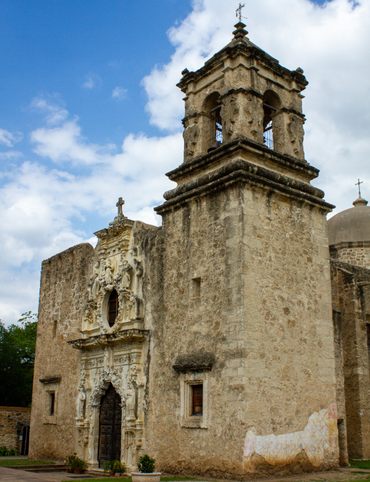
7 Creative Ways to Take in San Antonio’s Culture
Sponsored by Visit San Antonio
If you’re planning a trip to San Antonio, all signs will point you to the Riverwalk, the most-visited tourist destination in the whole state. And while the area offers countless bars, restaurants, and shops, the city is host to a wide array of cultural gems, waiting in plain sight. Whether it’s visiting gorgeous missions, touring sculpture gardens, or immersing yourself in African-American history, San Antonio contains fascinating excursions that will brighten up any trip.
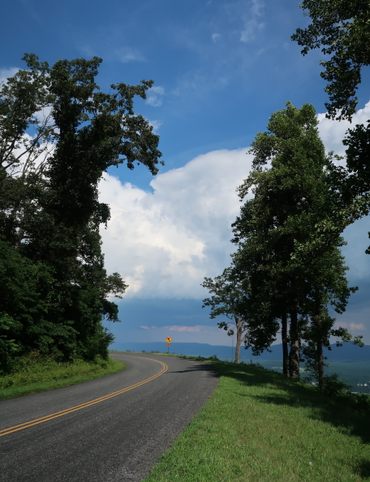
Eat Across the Blue Ridge Parkway
In 1933, President Franklin D. Roosevelt so enjoyed a ride through Virginia’s Skyline Drive that he wanted to make it go on longer—nearly 500 miles longer, to be exact. In the coming months, his administration kicked off a massive roadway project to connect Skyline with Great Smoky Mountains National Park, and the Blue Ridge Parkway was born. Today, the Parkway remains one of the most beautiful drives in the country, connecting the Great Smoky Mountains to Shenandoah National Park. While its scenic overlooks get all the attention, the region’s restaurants offer a more intimate way to experience the landscape: through the very flavors of the berry bushes that line its trails, the trout that swim in its rivers, and the vegetation that gives its green mountains their striking hue. From elk burgers at a Native-owned diner to a foraged feast at an Afro-Appalachian restaurant, here’s a guide to the most incredible places to taste the flora and fauna of the Blue Ridge mountains.
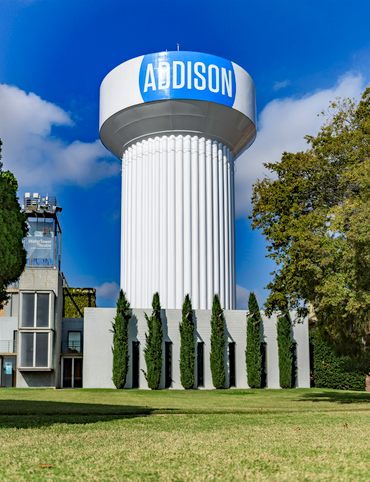
6 Ways to Absorb Addison, Texas’ Arts and Culture
Sponsored by Visit Addison
Addison, Texas found acclaim in 1975 when residents pushed for alcohol to be served in public areas, when many nearby towns were dry. With an almost immediate surge in visitors, about five years later the Town launched an aggressive beautification program. Fast forward to present day, and every corner of this small town has a unique theme or landscape, and the city is teeming with public artworks. Conveniently, visitors can download the Otocast app, which offers guided audio and a full map of all the public artwork found throughout the town. The guided tours come complete with photos, descriptions, and audio of the artists discussing their work. Below is a list of places from which to start your journey.

6 Ways to Take in the History of Mesquite, Texas
Sponsored by Mesquite Convention and Visitors Bureau
Located just outside the skyscrapers and congestion of downtown Dallas, Mesquite has managed to hold onto its roots as an agrarian community while still keeping up with the times. Known as the Official Rodeo Capital of Texas, the city attracts hundreds of thousands of rodeo fans annually. But the rich town history is also a major draw for visitors wanting to get off the big city track, as exemplified by these six spots.
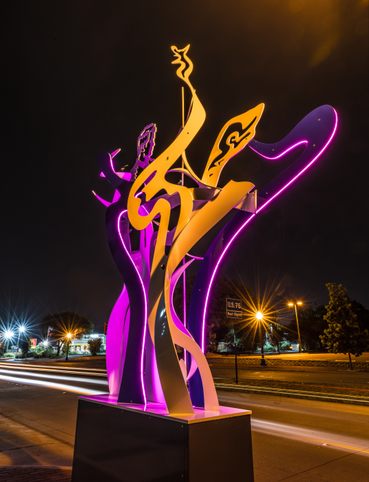
6 Ways to Soak Up Plano’s Art and Culture
Sponsored by Visit Plano
Plano, Texas may get its name from the flat local terrain—plano is the Spanish term for "flat"—but this Dallas suburb is anything but boring. The town makes up part of the Dallas–Fort Worth metroplex, so it’s an easy day or overnight trip if you’re visiting the big city. Located in the Northeast region of the Lone Star State, Plano is a mid-sized city with big personality, offering plenty of history and culture, with dozens of restaurants, bars, and shops. It also has an impressive collection of sculptures and public art pieces, which make for an excellent way to see the city.
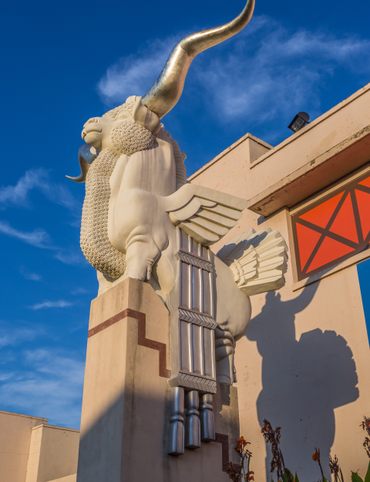
9 Dallas Spots for Unique Art and Culture
Sponsored by Visit Dallas
In a city as big and vibrant as Dallas, it’s possible to miss a few things—like a giant eyeball statue or an enormous, happy robot, for example. This Texas city has a wonderfully quirky side; here are the best ways to take in its wide-ranging and often surprising arts and culture scene.
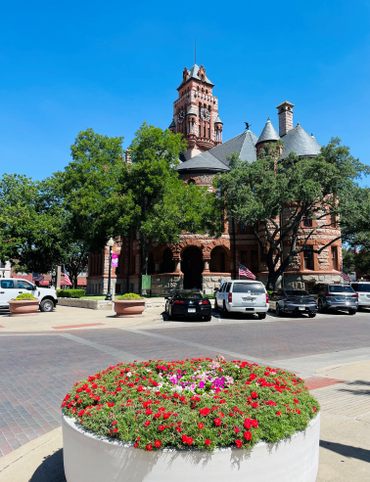
7 Sites of Small-Town History in Waxahachie, Texas
Sponsored by Visit Waxahachie
Waxahachie is a small Texas town that’s rich with history. Over thirty motion pictures have been filmed here, including the revolutionary Bonnie and Clyde and the Oscar-winning films Tender Mercies and Places in the Heart. It’s also been designated as the Crape Myrtle Capital of Texas, a place where you can witness the flower’s glorious blooming—especially during the Crape Myrtle Festival and Driving Trail every July. Despite its size (population: 36,735), Waxahachie boasts a wide array of historical places to visit.
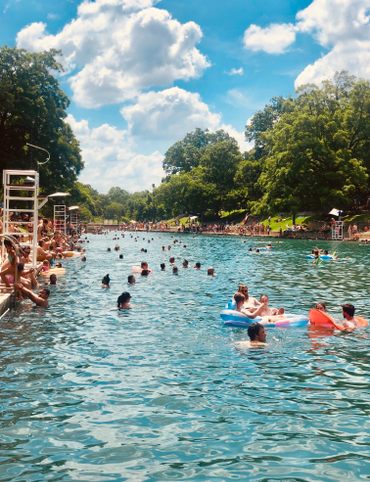
6 Natural Wonders to Discover in Austin, Texas
Sponsored by Visit Austin
There is more to Austin than really, really, really good tacos and barbecue. The city is also home to a smorgasbord of natural wonders, many of which are free to enjoy. So burn off your breakfast tacos or brisket by swimming and strolling among Austin’s diverse wildlife and plants.
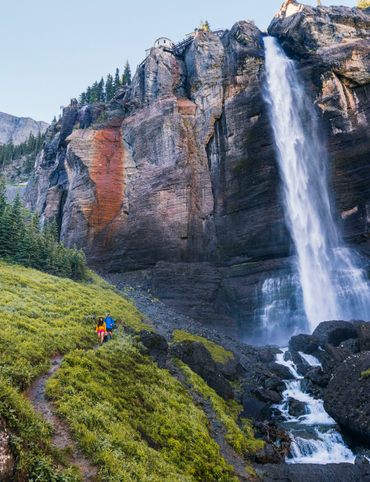
Discover the Secrets of Colorado’s Mountains and Valleys
Sponsored by Visit Colorado
Between all the world-class kayaking, hiking, and biking available in Colorado, you’re bound to find adventure-lovers around every corner this summer. But sometimes, what you really want is wide-open spaces, quiet vistas, and your footprints as your only company. In short, you want adventure on the secluded side. Luckily, in Colorado, there’s no shortage of hidden wonder. This itinerary will take you to a pristine mountain-top lake, under a triple waterfall, through majestic peaks on a historic railway, and over an iconic mountain pass on the state’s oldest aerial tram. There’s solitude to be found on this trip, but there’s also the thrill of finding some of Colorado’s best kept secrets. If you’re headed into the backcountry, follow these tips to stay safe and Do Colorado Right.
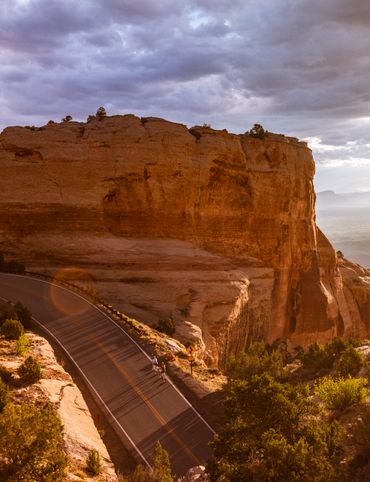
A Road Trip Into Colorado’s Prehistoric Past
Sponsored by Visit Colorado
Beneath Colorado’s majestic peaks, beside its roaring rivers, and nestled in the curves of its dramatic canyons, remnants of the prehistoric world have quietly waited for eons. Only over the past several centuries have people discovered these fossils, unlocking answers to the lives of ancient flora, the behavior of long-gone plants and animals, and the ever-changing landscape of this geologically dynamic state. Pieces of the prehistoric past that you can personally witness in Colorado include the continent’s longest dinosaur trackway, the remains of an ancient rainforest, the stumps of petrified redwood trees, and much more. A lot can happen over several hundred million years—but here in Colorado, none of it’s hiding.

A Feminist Road Trip Across the U.S.
Atlas Obscura has a tradition of exploring the stories of women who changed the world, from wildlife biologists and mountain climbers to Civil War spies and tattoo artists. To celebrate these daring women who struck out on their own, we’ve put together a cross-country road trip. Over 12 stops and more than 3,000 miles, this route will give you a front-row seat to women’s history in America.
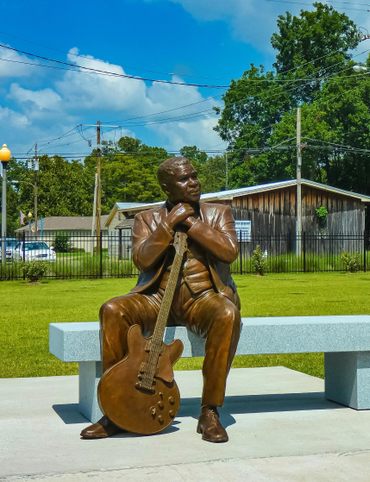
All Points South
Sponsored by Travel South
Whatever hand the U.S. had in shaping world music, it had its feet planted firmly in the South. From New Orleans, where a confluence of West Africans laid the groundwork for the musical improvisation we call jazz; to Mississippi, where work-songs birthed the blues before the blues birthed rock ‘n’ roll; to Tennessee, where rock intersected with Appalachian folk songs to create country rock, this distinct artistic heritage was forged uphill, from the humblest of origins. Nonetheless, the musical legacy of unsung field hands, farmers, and blue collar workers coming up from the South would go on to change the world, and in no quiet way.
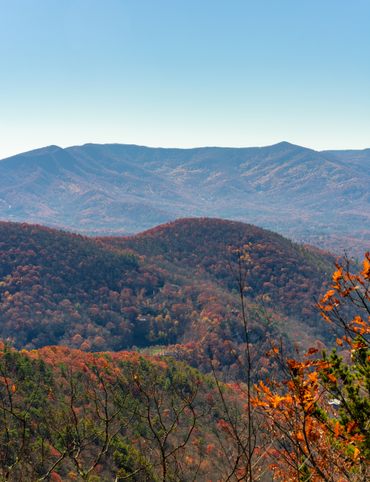
Asheville: Off the Beaten Path
Sponsored by Explore Asheville
With bustling food, music, and brewery scenes, Asheville has plenty of attractions—but stick to the downtown area alone, and you’re missing half the fun, at least. Surrounded by national forests, hideaway mountain towns, quirky arts centers, and more, some of Asheville's best spots lie beyond the downtown area. This itinerary will help you navigate America’s weirdest little mountain town like a local as you scale mountaintops, watch artisans at work, ride century-old trolley cars, and get fake-married at a real-live punk bar. Welcome to Asheville.

Restless Spirits of Louisiana
Sponsored by Louisiana Office of Tourism
If ghost stories help us confront a harrowing past, it’s no surprise that Louisiana is filled to the brim. From the swamplands to the pine forests, the state reverberates with tales of fortunes won and lost, untimely demises, and some of the darkest chapters of early American history. Whether you believe in the paranormal or not, the stories below reveal the hidden histories behind this mystifying state—place by place, spirit by restless spirit.
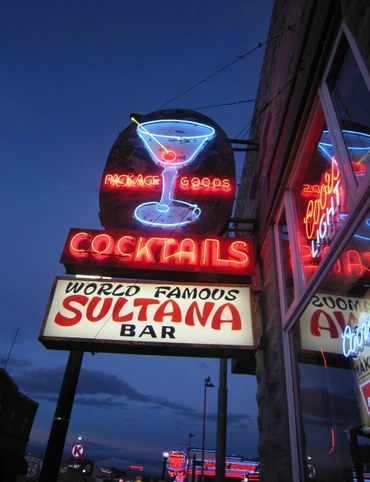
Eat Across Route 66
Created in 1926, Route 66 was once the primary way drivers headed West, and a network of local economies sprouted up along its path. But after the Interstate Highway System replaced many portions of the “Mother Road,” most of its associated attractions faded away. Intrepid travelers, however, can still seek out the remnants of this artery through America and even find a few new gems along the way. Along with the towering Muffler Men and the sprawling, changing landscapes that speed past your car windows, the restaurants and bars along Route 66 offer an enchanting glimpse into American history and culture. From an Illinois watering hole once frequented by Al Capone to an Albuquerque restaurant specializing in pre-Columbian cuisine to a steakhouse born of Tulsa’s once-booming Lebanese community, these spots showcase the delicious diversity of America’s most iconic road.

18 Mini Golf Courses You Should Go Out of Your Way to Play
Adventures filled with oversized characters, obstacles, and castles await—all you need to join is a putter and a ball. Yes, we're talking about miniature golf, the Lilliputian game with a big imagination. Since 2012, we—Tom Loftus and Robin Schwartzman—have been documenting the world of mini golf on our website A Couple of Putts. After putting our way through more than 300 courses, we’ve stumbled into becoming experts who design, build, and consult on all things miniature golf. With our keen eye for elements that make courses distinctive and magical destinations, we’ve created this world tour to showcase some of our personal favorites, as well as a few courses on our “must play” list. In keeping with the theme, here are 18 unique courses that span the globe. This wild assortment of putting places offer unique ways to interact with the past and present. Putt when ready!

4 Underwater Wonders of Florida
You probably know that Florida is famous for its shorelines, from the shell-stacked beaches of Sanibel Island to the music-soaked swaths of Miami. But many of the Sunshine State’s coolest attractions rarely see the light of day—they’re fully underwater. Here are some of the state’s strangest and most spectacular sites, beyond the beach, and below the surface.
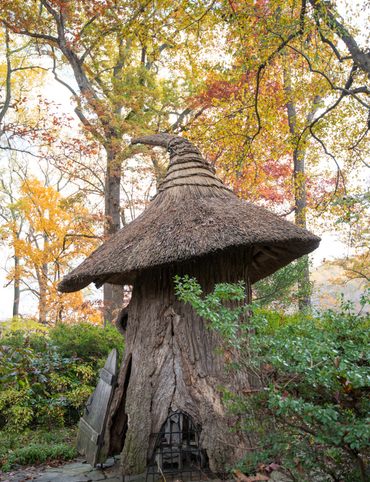
6 Spots Where the World Comes to Delaware
Students of American history will know that Delaware is noteworthy for being the first state to ratify the Constitution of the United States, earning it the nickname “The First State.” But look beyond Delaware’s American roots, and you’ll find other cultural influences, tucked away where only the most enterprising of explorers will find them. From a Versailles-inspired palace to an English poet casually lounging in a garden, here are six places to help you travel the world without ever leaving the state.

Study Guide: Road Trip from Knoxville to Nashville
Sponsored by Graduate Hotels
East Tennessee boasts some of the state’s most beautiful highways and byways. Rather than rushing from one destination to the next, this is the perfect road trip to meander and stop along the way. Follow this suggested itinerary between Knoxville and Nashville, and you’ll discover lesser-known historical gems, stunning natural landscapes, and some memorable treats, all bookended by two of Tennessee’s truly great cities.
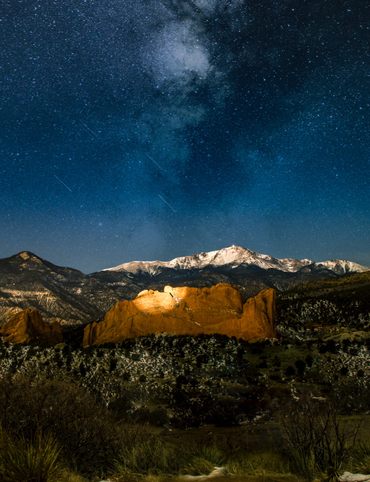
Rogue Routes: The Road to Pikes Peak
Sponsored by Nissan
It wouldn’t be quite accurate to say this route from Salt Lake City to Colorado Springs is paved by rogue trailblazers. Indeed, much of it remains unpaved, not so much out of disregard as in homage to the rugged landscape that has inspired so many to strike out against the banal, to write their own script. From pioneering artists to obsessive curators and bold builders, this route follows in the footsteps of a bold few—watch your step.
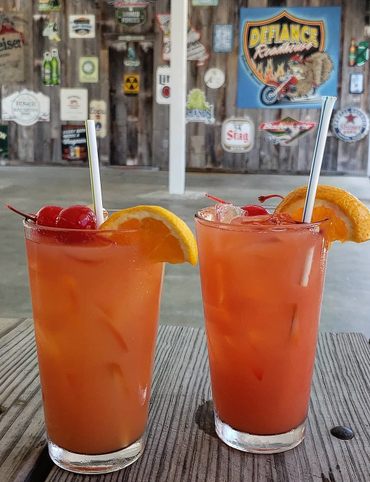
6 Wondrous Places to Get Tipsy in Missouri
Celebration or desperation aside, these six spots in Missouri are proof that imbibing is only half the fun of bar culture. From a mountaintop drive-through golf-cart bar to the state's oldest waterhole hole—nestled more than 50 feet underground in a limestone cellar—the “Show-Me State” has no shortage of boozy fun to show you (as long as you're 21+, of course).

Rogue Routes: The Road to Carhenge
Sponsored by Nissan
Artistic visionaries and the spirit of rogue ingenuity define this route that starts in Denver, winds through the plains of southeastern Wyoming, and finishes in Alliance, Nebraska. It takes you off the beaten path to discover quirky art installations, historic monuments, local flavors, and natural wonders. This route of 11 inspiring spots is certain to spark the autonomous flame for all who take it on.
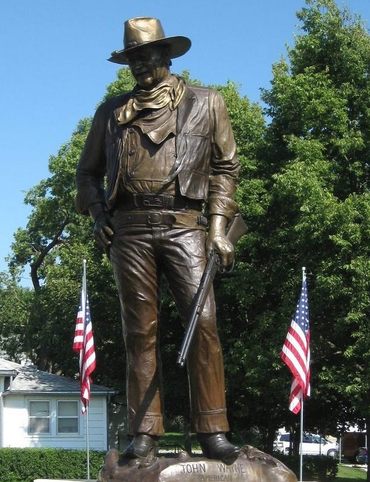
4 Pop-Culture Marvels in Iowa
Iowa is the pantry of America, giving over the vast majority of its land to agriculture and producing more corn and pork than any other state. But the state has also proven fertile ground for pop culture, as well. The landscape has inspired movies, films, songs, paintings, and novels while spawning movie royalty in the form of a certain Duke. Bask in the wonderful corniness of these four pop-culture touchstones in the Hawkeye State.

7 Stone Spectacles in Georgia
At the heart of every peach rests its stone center, or pit. So perhaps it’s fitting that Georgia, the Peach State, holds a wealth of stone-based treasures of a different sort. In Walker County, a labyrinth of limestone passages leads to the deepest cave drop in the continental United States. In Calhoun, a rock garden of spectacular sculptures hides behind a church. And in Savannah, two gravestones appear on an airport runway. Whether carved by hand or nature, these stone wonders truly rock.
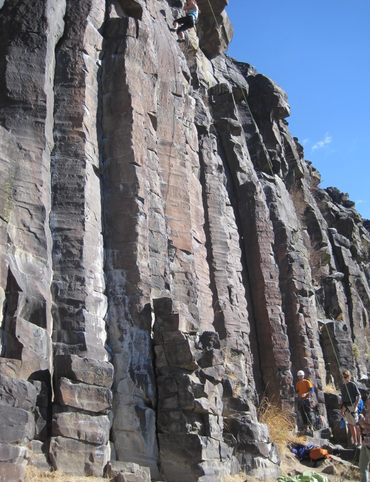
6 Stone-Cold Stunners in Idaho
It turns out that no one really knows how Idaho got its name. It's been thought that the name came from Shoshone, but in truth it may have just been made up by a somewhat shady politician. Regardless of what you call it, the Gem State is sparsely populated and unapologetically wild, and full of wonders—especially geological ones.
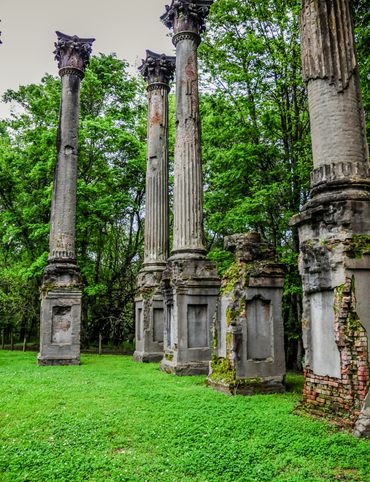
8 Historic Spots to Stop Along Mississippi's Most Famous River
The Magnolia State is also famous, of course, for being one of the locales ribboned by the squiggly Mississippi River, which stretches more than 2,300 miles from Minnesota to Louisiana. Combined with the Missouri River, one of its tributaries, the Mississippi is the fourth-longest river in the world, trailing the Nile, Amazon, and Yangtze. The river is well worth a visit—and if you’re roaming the state that shares its name and want to hug fairly close to the shore, here are eight places to pop in along the way.
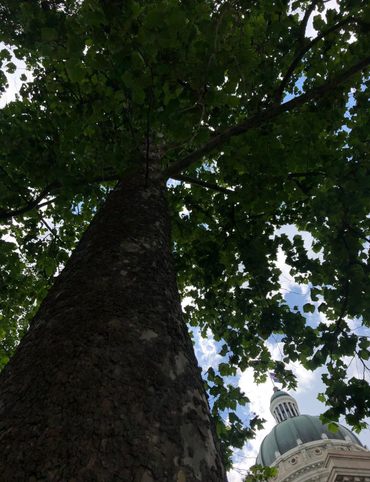
5 Incredible Trees You Can Find Only in Indiana
Once upon a time, the forests of Indiana were endless. Or that was how it seemed in the 19th century, when the state produced more lumber than anywhere else in the nation. The valuable trees went first, such as black walnut and white oak. The scrubby leftovers were often burned to create farmland. At the start of European settlement, 90 percent of what is now Indiana was forest. That number plummeted to a measly 6 percent by 1922. While the forests have significantly recovered, there are still only about 2,000 acres of old-growth forest left in the state. Yet trees hold a hallowed place here. One town has graciously allowed a tree to grow on its courthouse roof for more than a hundred years. In many graveyards, markers are fashioned to look like stumps and branches. Read on for five woody wonders of Indiana, all rooted deeply in their communities.

5 Famous and Delightfully Obscure Folks Buried in Kentucky
When the Grim Reaper visits, it doesn't discriminate. The cemeteries of the Bluegrass State are home to a cast of characters that includes famous folks, as well as others whose faces you know, but whose names you might not recognize. Visitors can pay their respects to a fast-food icon, a world-famous athlete, comedic actor, and a local magician, as well as a folk hero who may or may not be buried there at all.

4 Wacky Wooden Buildings in Wyoming
Picture Wyoming during its Wild West days. Once your mind wanders across the epic landscapes and into town, the mythic scene you might imagine—the saloon, the general store, the bank—will likely consist of wooden structures, ones thrown hastily up as settlers headed west in search of mining wealth, land, and work on the expanding railways. As it became the stuff of legend, accounts of the Wild West turned into tall tales, often conveniently overlooking the scale of the violent displacement of Native Americans. But as the period’s impact on the West is very real, it’s no surprise that the most unusual structures in Wyoming are wooden buildings that date from the frontier era or hearken back to it.

7 Spots to Explore New Jersey’s Horrors, Hauntings, and Hoaxes
In New Jersey, it can be difficult to separate fact from fiction. In 1909, newspapers published accounts of a monster known as the “Jersey Devil” said to be prowling the Pine Barrens. In 1938, a radio broadcast declared that aliens were invading the small community of Grover’s Mill. And today, streets and signs suggest ominous origins with names like Ghost Lake and Shades of Death Road. If you know where to look, the Garden State offers stories far stranger than any Springsteen song or scene from The Sopranos. Here are seven sites to explore the hauntings, horrors, and supernatural phenomena of New Jersey.
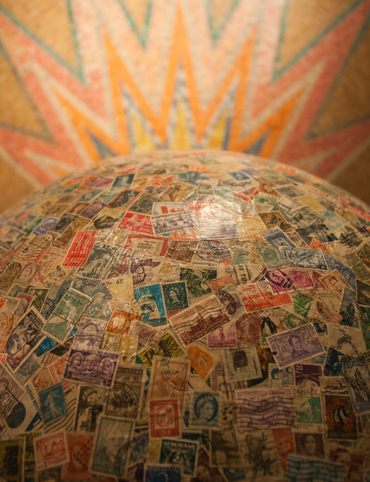
4 Out-There Exhibits Found Only in Nebraska
Nebraska is affectionately known as the Cornhusker State or the Wheat State, but this particular swath of Big Sky Country could also be called “The Land of Very Cool Collections.” From monuments to powdered beverages to love letters to roller skates, here are four exhibits worth a visit.
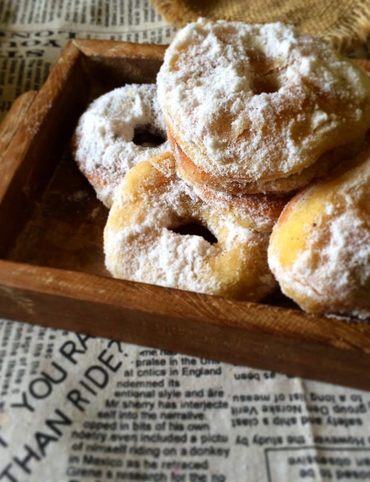
6 Sweet and Savory Snacks Concocted in Utah
More than half of Utah’s population is Mormon, which translates to more than 1.5 million citizens who eschew coffee, alcohol, and cigarettes. Sugar, however, is not restricted. This may explain why the state’s candy-eating rate is twice the national average: Everyone needs a vice. Or perhaps it’s that Mormons’ proclivity for large families skews the demographics in favor of sweets and starches—more kids equals more unbridled sugar fiends.Couple the state's bounty of confectionary with its proximity to Idaho, and you've got a wealth of potato-based treats to contend with, as well. In some cases, potatoes and dessert become one. Our advice? Don't knock it until you try it.
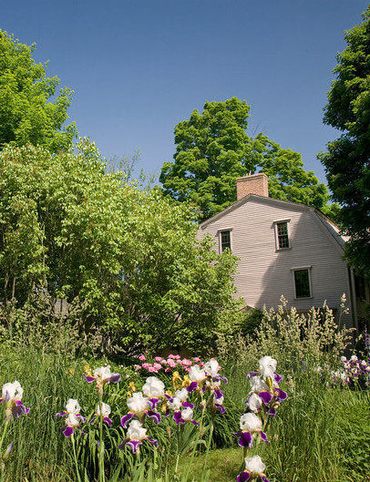
12 Places in Massachusetts Where Literature Comes to Life
Massachusetts is a lit-lover's paradise. From landscapes that have moved writers to wax poetic about beans to story-inspired sculpture parks and shops stacked with volumes new and old, the Bay State would also be aptly named the Book State. Here are 12 places to celebrate writers or the places that inspired them.
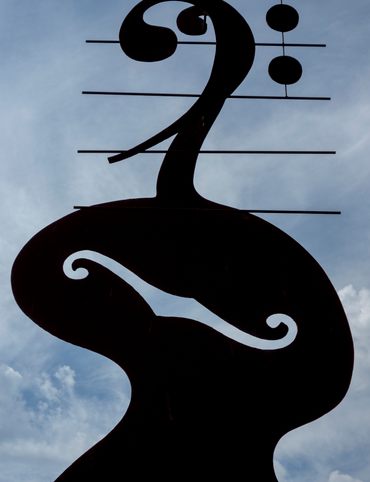
8 Places to Get Musical in Minnesota
Two 20th-century musical figures tower over the state of Minnesota: Prince Rogers Nelson and Robert Allen Zimmerman. (That's Prince and Dylan to us mere mortals.) And while the Gopher State definitely celebrates its favorite musical sons, much of the state has a musical bent to it, from a singing beach to a room so devoid of sound is makes a musical madness all its own.
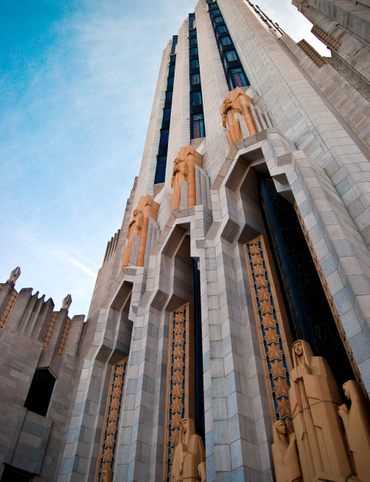
8 Buildings That Prove Oklahoma's an Eclectic Art Paradise
In the 1920s, a number of oil reservoirs were discovered in Oklahoma, and the promise of riches led to a population boom. Would-be oil barons moved in from the coasts, bringing with them the most popular style of the moment, Art Deco. Much of that architecture still stands today, alongside institutions that honor the state’s earlier history and its modern culture. Though many people know Oklahoma better for its oil fields and cattle ranches, the state also has a rich history of innovative art and architecture. From elaborate family estates to experimental art collectives, these are a few of the unique creative spaces that await in Oklahoma.

9 Stunning Scientific Sites in Illinois
When you think about Illinois, what are the first things that come to mind? Maybe it's the environment, with its vast prairies and cold winters. Maybe it's someone from the state, like Abraham Lincoln, or something, like Chicago-style hot dogs or deep dish pizza. What you might not realize, though, is that there's a lot of fascinating science happening in Illinois. (There was even a settlement named Science along the Illinois River in the early 19th century.) From some of the world's most powerful computers and particle-smashers to horological oddities, these are a few of the laboratories and collections that the 21st state has to offer.
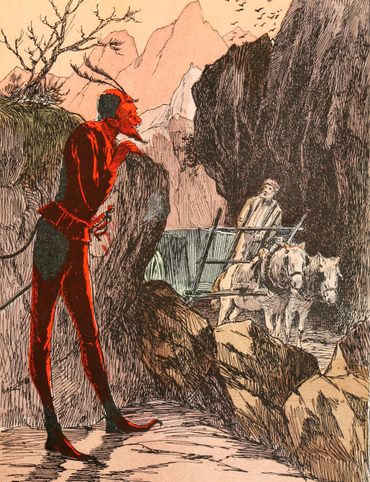
5 Strange and Satanic Spots in New Hampshire
What is it with New Hampshire and the Devil? Since the time of European settlement, Satan seems to have lurked around every corner of the Granite State. In the era of witch hunts, terrified townspeople accused their elderly neighbors of speaking with the Devil, and local lore has it that the stones around a frothing waterfall in the woods once served as Satan's kitchen, where he cooked a pot of beans with the flames of Hell. Perhaps the Devil got his best turn in “The Devil and Daniel Webster,” a 1936 short story by Stephen Vincent Benét. The story features real-life lawyer and politician Daniel Webster fighting for the soul of a down-on-his-luck New Hampshire farmer who, in a moment of desperation, made a deal with the Devil. In the tale, the Devil uses every legal and supernatural means possible to outwit Webster, who battles to spare New Hampshire from further demonic meddling. “Any Hades we want to raise in this state, we can raise ourselves, without assistance from strangers,” Webster remarks. But for those who still do want to raise a little hell, New Hampshire has plenty of spots for devil-dealing.

8 Historic Military Relics in Maryland
Maryland has the distinction of being one of the first states to officially join the Union in 1788—and as such, it’s played both big and small roles in various battles across the nation's history. Here are eight nods to its military past, ranging from a furnace that produced George Washington’s cannonballs to an unusual museum dedicated to the U.S.'s cryptographic history.
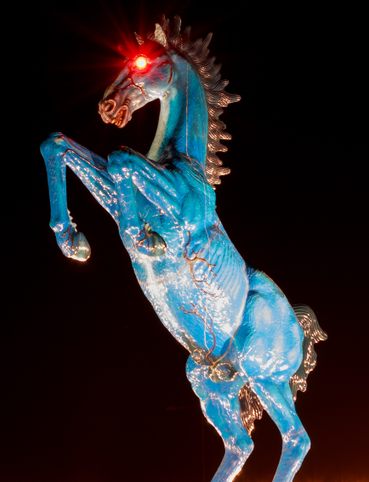
5 of Colorado's Least-Natural Wonders
The state of Colorado is a gold mine of natural beauty: It's famous for its picturesque deserts, dramatic canyons, and shimmering, snow-capped peaks. But the Centennial State also deserves some love for its many unnatural wonders. There's a psychedelic church, a 231-pound sticker ball, and a cryogenic mausoleum. And who can forget the blue horse with neon-red eyes that towers outside the Denver airport? If you're looking to skip the ski slopes and hiking trails in favor of Colorado's strangest sights and most curious creations, this is where to start.

Rogue Routes: The Road to Sky’s the Limit
Sponsored by Nissan
For all of the images of Hollywood glamour, beach living, and beautiful people, Southern California has a lot of peculiarities that don’t get nearly as much attention. This route from Los Angeles to Twentynine Palms seeks out the strange and novel, providing a refreshing foil to SoCal clichés.

6 Hallowed Grounds in South Carolina
South Carolina is known for its picturesque coastal cities and Southern charm. Given its firm placement in the Bible Belt, the Palmetto State is home to many churches—but it also holds fascinating ruins of houses of worship, wondrous works of art inspired by African traditions, and historic holy grounds hiding in plain sight.
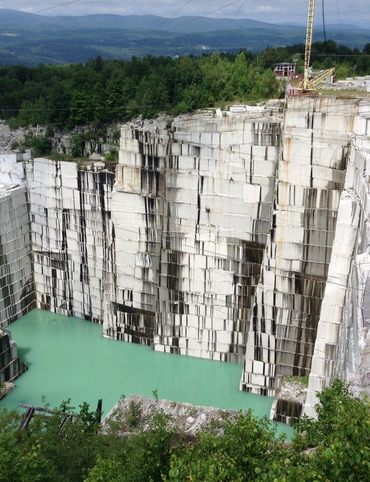
9 Rocking Places in Vermont
Vermont may be known for its maple syrup and homey coziness, but beneath that rustic veneer lies a solid history of mineral industry. Here's a history of the Green Mountain State from the ground up.

Knoxville Study Guide
Sponsored by Graduate Hotels
Knoxville, Tennessee, is a small city that’s made a big impact on the world. Founded by George Washington’s administration as the capital of the new Southwestern Territory, it was the 16th state’s capital — twice — for almost 20 years. Tucked in the heart of the valley along the Tennessee River, Knoxville is home to more than 120 parks and more than 160 miles of trails and greenways. It witnessed culmination of the women’s suffrage movement, played host to the 1982 World’s Fair and hosts the oldest symphony orchestra in the South. It’s also home to the University of Tennessee and its Volunteers, the fans of which bleed orange and white, the prominently displayed school colors. Need to give your feet a break as you explore the natural beauty, history, and culture of this thriving Southern city? Hop aboard the free Knoxville Trolley, the transit system operating since 1876. No matter how you choose to get around, there’s much to discover in Knoxville.
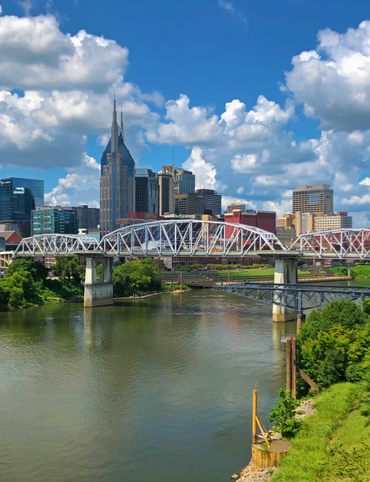
Nashville Study Guide
Sponsored by Graduate Hotels
Glitz, glamour, guitars, honky-tonks, sequins, and neon are synonymous with Music City and its country music roots. While there’s perhaps no other city that embraces big hats, big hair and big personalities quite the way Nashville does, there’s much more to Tennessee’s capital than meets the eye. Its rich history of food, culture, and innovation makes it a haven for creatives of all stripes. Though the city shimmers with energy, it’s easy to commune with nature and enjoy the pristine beauty of East Tennessee, starting with the Cumberland River that runs right through the heart of downtown. Whether you’re looking for a brush with history, a chance to enjoy the great outdoors or an opportunity to hear some of music’s biggest stars, Nashville has it all. If your boots don’t feel like walking the entire route, Old Town Trolley offers hop-on-hop-off tours around the city, with a stop just outside Graduate Nashville.
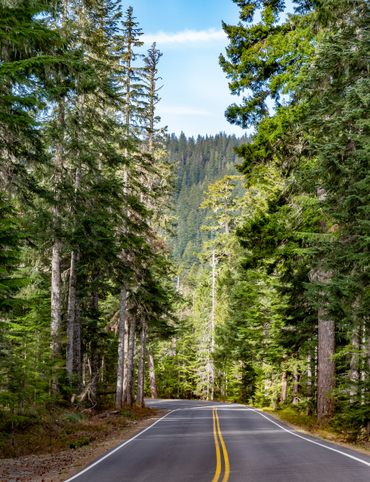
Rogue Routes: The Road to Camp Colton
Sponsored by Nissan
Lush rainforests filled with ethereal shades of green; foggy beaches that stretch on for miles; towering mountains that dominate city skylines. It’s hard to think of a region with more diverse natural beauty than the Pacific Northwest. Take a journey from Seattle to Colton through the environments that have inspired artists, musicians, and storytellers for generations. From ancient mountains to reclaimed lands, these places are filled with excitement, intrigue, and maybe even a little off-road mystery.
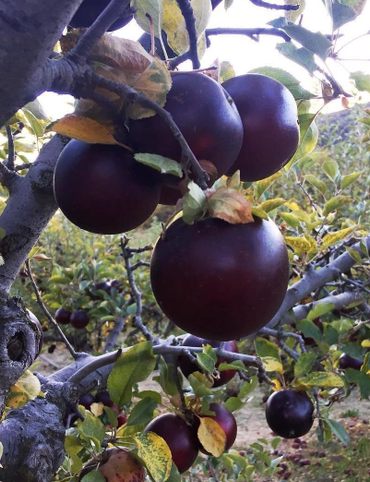
Black Apples and 6 Other Southern Specialties Thriving in Arkansas
Climate, globalization, trends, employment rates, lobbying—it all influences what we eat. As time marches ever-onward, recipes are forgotten, traditions fade into quiet obscurity, and institutions are abandoned. But some entities that seem slated for cultural demolition are kept alive in Arkansas. From brewing beer using the spring water of a once-infamous bathhouse to serving historic Appalachian home-cooking hot off of diner skillets, these seven Arkansan spots savor and celebrate relics of regional heritage.
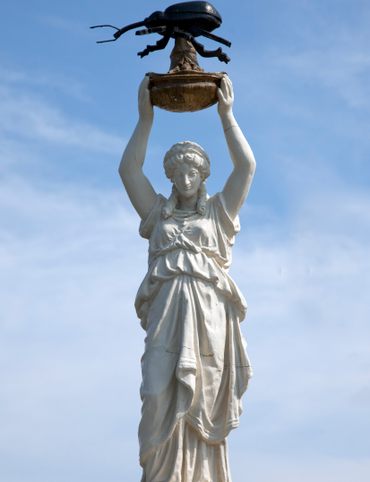
4 Monuments to Alabama’s Beloved Animals
Maybe you love your cat a lot—maybe even enough to commission a little painting of your furry companion. But the people of Alabama can do you one better. Here, you’ll find a whole cemetery devoted to hounds, a heartfelt memorial to a fish, even a statue of a pest that drove farmers batty before it also spurred them toward ingenuity. Alabama knows how to fete Fido, as well as his scuttling, swimming, and spacefaring compatriots.
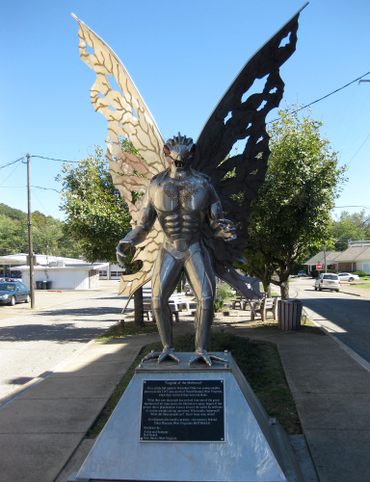
The Dark History of West Virginia in 9 Sites
The Rockies may be bigger, but there's something special—and sometimes spooky—about the Appalachians. With dense forest cover, long history, and the shadowy hollows ("hollers," locally), they seem at times to be full of secrets. In West Virginia, the mountains and hills hold tales and myths, and a lot of places that were used and then abandoned. If you get excited about the feel of a shiver down your spine, you'll find a lot to love.
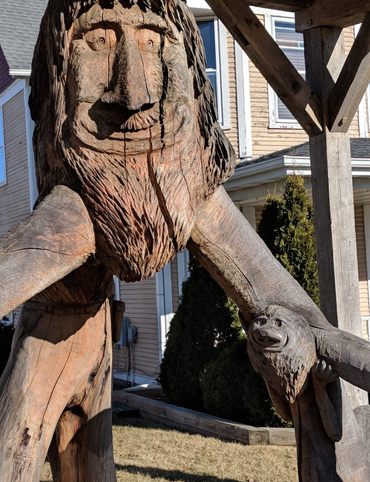
11 Zany Collections That Prove Wisconsin's Quirkiness
Pick an object. It could be a bottle of mustard. Or a life-size troll sculpture. Or a metal sculpture with big Victorian-steampunk energy. It doesn't really matter, as long as you collect or create so many of them that your collection becomes a roadside attraction and a cherished local landmark. A remarkable number of Wisconsinites have chosen this life path, and the result is a truly remarkable collection of collections scattered across the state.
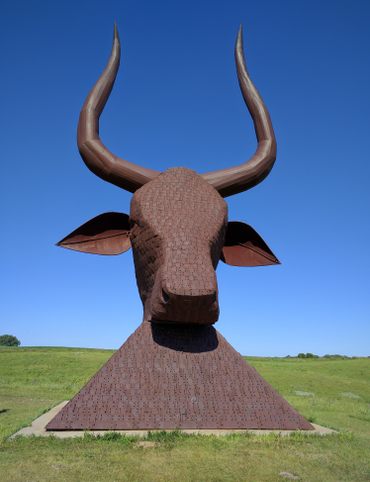
7 Inexplicably Huge Animals in South Dakota
One of the great resources of the Mount Rushmore State is millions and millions of years old: fossils. The state has long had pride of place in the paleontology world for the dinosaurs and mammoths that have been excavated there. And that history seems to have provided inspiration for the state's menagerie of massive megafauna. Here are some of our favorite places that celebrate dinosaurs, huge animal art installations, mammoths, and ... a prairie dog?
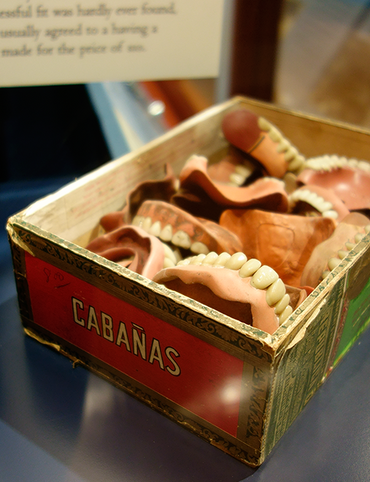
6 Fascinating Medical Marvels in Pennsylvania
In the 1700s and 1800s, Philadelphia was the center of medical scholarship in the United States. The city not only attracted the brightest minds, but also the most curious cases and characters. From the oldest quarantine facility in the country to a museum that memorializes a traveling dental circus, here are six places to marvel at the trials, errors, and triumphs of medical history in Pennsylvania.
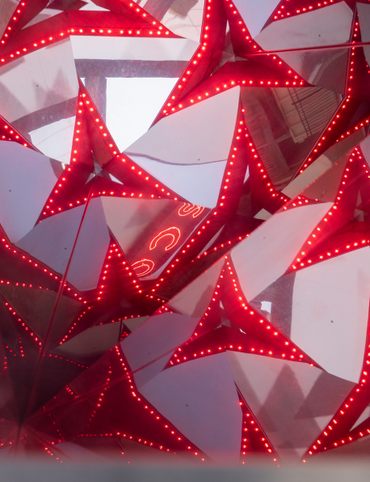
8 Places in Virginia That Aren’t What They Seem
They say that Virginia is for lovers. If you love a little mystery, then they’re definitely right. With its mountain ranges, deep forests, and proximity to the nation’s capital, the state is filled with unusual corners and overlapping histories. From a Cold War bunker turned recording archive to a Styrofoam Stonehenge, these places in Virginia are more than meets the eye.
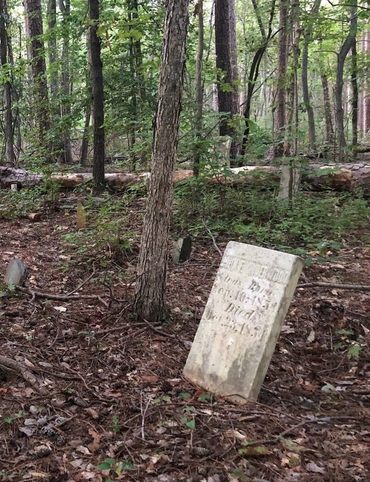
7 Cool, Creepy, and Unusual Graves Found in North Carolina
Every state in the union has graves, and their share of unusual burials or cemeteries, but there's something about the Tarheel State's final resting places that carry a sense of history and mystery, from long-forgotten graveyards, to eternal resting places for conjoined twins, to a politician that had himself buried inside a giant boulder.
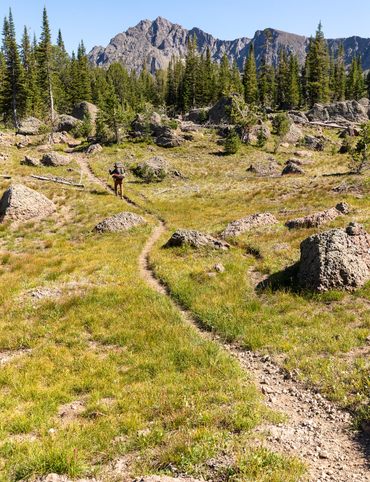
7 of Montana's Spellbinding Stone Structures
The Continental Divide runs through Montana, separating the mountains and glaciers on the west from rolling plains to the east. Much of the state is built on a bed of rock that dates back more than a billion years, to the Precambrian, or the earliest era in Earth’s history. The geology of Montana has shaped the state, from the mountain ranges to that draw hikers to Glacier and Yellowstone National Parks to mineral deposits that drew prospectors during the Gold Rush to the vast plains that have long supported hunting and agriculture.
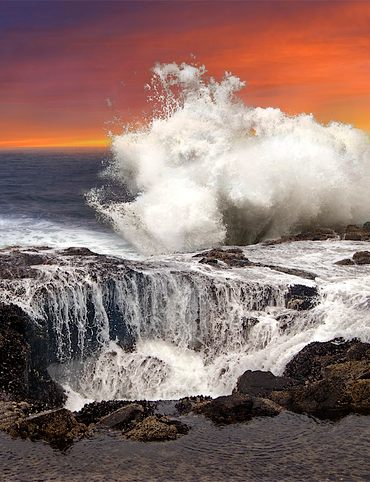
9 of Oregon’s Most Fascinating Holes and Hollows
Along with the rest of the Pacific Northwest, Oregon has been shaped by volcanic activity. Active volcanoes, Mount Hood among them, dominate the skyline, and the city of Portland was built atop an extinct volcano. Over tens of thousands of years, these geological hotspots have left many holes in their wakes, including deep craters, narrow canyons, and subterranean lava tubes. Here are a few of the most intriguing voids that Oregon has to offer.
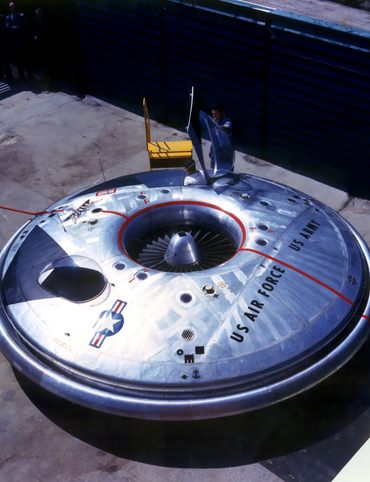
Take to the Skies With These 9 Gravity-Defying Sites in Ohio
Sure, Kitty Hawk, North Carolina, got headlines, but the Wright Brothers were Ohioans through and through. That's where they had their print and cycle shop, and established the world's first airplane factory. From Dayton's Aviation Heritage National Historical Park, to NASA's Glenn Research Center, to Congress officially declaring Ohio the “birthplace of aviation,” and much more, no other state takes to the skies and beyond like the home of the Buckeyes. Here are some of our favorite places to feel the wind beneath your wings.

9 Strange and Surreal Spots in Washington State
The deep, moody forests of Washington state are filled with secrets and stories. From springy mosses to towering Douglas firs, rocky outcrops, and glacial deposits, it’s easy to see how the landscape helped set the tone for stories like David Lynch’s trippy TV series Twin Peaks and the teen vampire romance that is Twilight. Across the Evergreen State, human- and nature-made oddities are rarely far from reach.
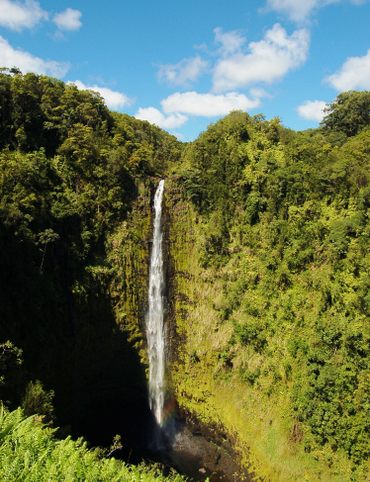
8 Watery Wonders in Hawaiʻi, Without Setting Foot in the Ocean
Yes, we know, Hawaiʻi is surrounded by water—the state is a watery wonder in and of itself. But the ocean is only the beginning. The volcanic islands' dramatic topography, unpredictable coastlines, and high rainfall mean that water in and around the Paradise of the Pacific cavorts in all sorts of stunning ways: waterfalls, blowholes, pools, and more. (Plus rainbows. Lots and lots of rainbows.) And you can enjoy all of these natural showstoppers without having to get your feet wet.
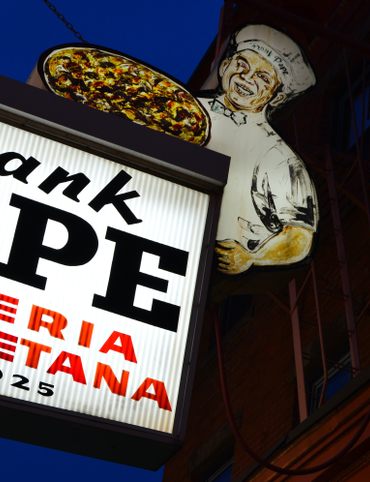
6 Unusual Eats Curiously Cooked Up in Connecticut
For superb pizza, most people look to New York. Excellent burgers are available in every one of the 50 states. But where can you find hamburger recipes caught in the early 20th-century, cooked in steamers or served on toast with absolutely no ketchup allowed? Or, for that matter, fancy cheese made by trailblazing nuns who launched their dairying business at a time when Velveeta was still the norm? Connecticut may be an odd place to designate as a culinary cradle, but the state contains everything from the last of a generation of feminist vegetarian restaurants to what the Library of Congress dubs the very first place to have served up a hamburger. Unique culinary institutions cropped up in every corner of the state. Some have survived, while others have fallen by the wayside (R.I.P. to the Frisbie Pie Company). Here are six remarkable gastronomic institutions in a place that has proved to be fertile ground for unusual eats.

11 Close Encounters With Aliens and Explosions in New Mexico
In the arid and remote expanses of New Mexico's landscape, booms and zooms abound. From the volatile effects of the Manhattan Project to the otherworldly possibilities of Roswell's UFO, the Land of Enchantment has never shied away from the controversial or far-reaching. Here are several places to encounter those legacies across this southwestern state.
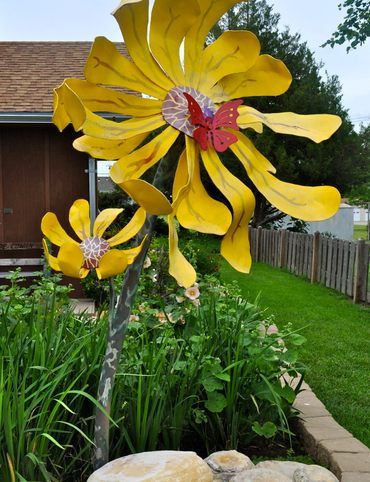
10 Places to Trip Way Out in Kansas
The Sunflower State has a reputation for being flat—in fact, scientists have shown that it is objectively way flatter than a pancake. Far from being featureless, though, Kansas can be mind-bending in its own weird way. Maybe it all started with The Wizard of Oz. From a missile silo that once dominated the world's LSD supply to rock formations shaped like mushrooms, roadside art that will make you think you've been whisked away by a tornado, and a giant pile of sock monkeys, Kansas is full of treasures that are sure to make you do a double take.
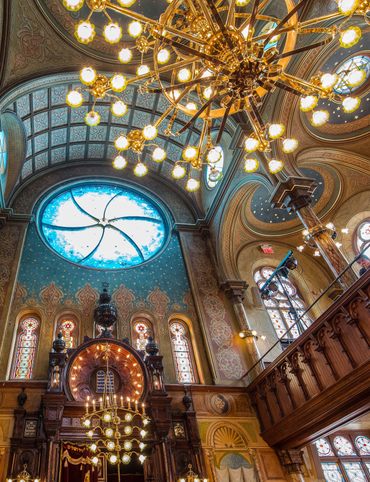
The Resilience of New York in 10 Remarkable Sites
New York has been described as a playground for the rich and powerful, but the state's history is full of ordinary people who have overcome extraordinary struggles. What if Seneca Falls, the village that launched the fight for women's suffrage, were as famous as Niagara Falls? What if Weeksville, the historic free Black community in Brooklyn, were as well-known as Williamsburg? From immigrant sanctuaries to the Survivor Tree, here are sites where New York has shown its resilience.

7 Very Tall Things in Very Flat North Dakota
North Dakota is not quite the flattest state in the U.S., but it's pretty close. (In one analysis, it placed third, after Illinois and Florida.) During the last Ice Age, glaciers moving across the terrain had a planing effect on the land, dropping sediment that filled in any valleys, creating sprawling prairies and open, big skies. These large expanses are home to more than a few sky-high structures, both natural and human-made. From rocky peaks and multi-ton animal statues to one of the tallest buildings in the world, these are some of the most impressive structures that North Dakota has to offer.
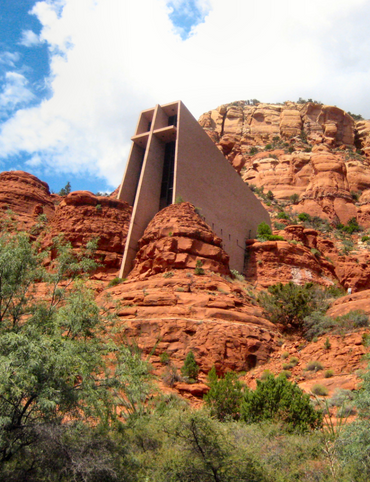
8 Blissfully Shady Spots to Escape the Arizona Sun
For about half of any given year, much of Arizona is too hot to handle. But even in peak summer, the state is home to a stunning spread of geographic diversity and a mysterious magic that emanates from the landscape—and we don’t just mean the mirages. Locals and visitors alike flock to higher altitudes, recreation-friendly bodies of water, and indoor spaces that are so heavily air-conditioned they practically require a jacket. Here are eight sheltered spots to retreat from the heat, from natural formations to an immersive art exhibit that invites lingering. We've even added a couple cool places (220 feet underground or a mile above sea level) to dream about spending the night.
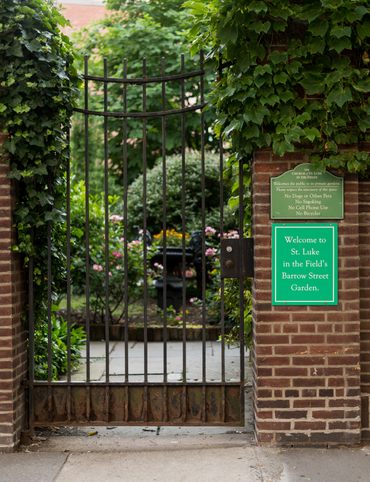
On the Run: NYC
Sponsored by Cole Haan
A run through New York City demands a delicate balance: Zoning out versus keeping your eyes peeled. On the one hand, there’s the clear-headed, in-the-zone mental state that any good sneaker-to-pavement exercise requires. At the same time, well, it is New York City. You can hardly walk two blocks without uncovering a hidden gem or noticing some new detail that’s actually been lurking in plain sight for decades. This 5.3-mile run takes you along a scenic route to discover some of these hidden gems. You can run the entire route, break it up into multiple runs, or do it in reverse. With the right running shoes, you’re bound to pick up on one of the million tiny, fascinating details along the way.

On the Run: Los Angeles
Sponsored by Cole Haan
Originally named “Venice of America,” Venice, California, owes its existence to a wealthy developer’s dream of a canal-laden resort town west of Los Angeles. The dream didn’t last long: After opening in 1905, the city went broke before joining Los Angeles in 1926. The decades of neglect that followed earned Venice the nickname “the slum by the sea,” but its affordability also attracted artists, beginning with the Beats in the late ’50s. Venice’s identity as a rough-around-the-edges artist haven endures more than 60 years later, though its affordability less so. If you’re looking to plot a trek across Los Angeles pavement and beaches, zero in on Venice with a run that oscillates between fast-and-furious and slow-and-curious. Take on this 5.2-mile run in one go, break it up into multiple runs, or do it in reverse. With the right running shoes, you’ll be ready to navigate Venice’s storied past and its eternally eccentric personality.

9 Surprisingly Ancient Marvels in Modern California
Long before California was home to tech campuses, freeways, and palm trees, Native inhabitants etched huge designs into the landscape. Even before that, at roughly the same time that the Pyramids of Giza were under construction, a tree that still survives today began taking root. And even farther into the past, glaciers and mammoths created enduring monuments to antiquity. Across the state, the distant past is still within easy reach.
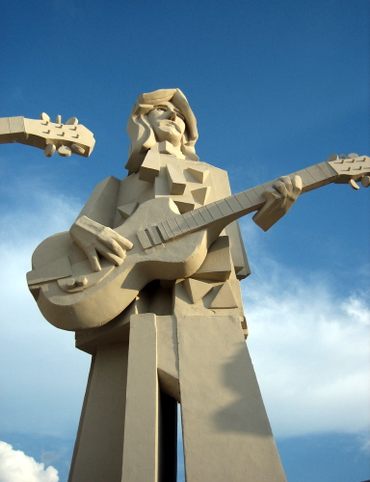
10 Art Installations That Prove Everything's Bigger in Texas
There’s a time-tested saying about things being large in Texas—and it certainly holds true for the state’s artworks, many of which are so huge or sprawling they could only reasonably live outdoors. Across the vast expanse of the Lone Star State are artistic testaments to some of the area’s oddest characters and stories.
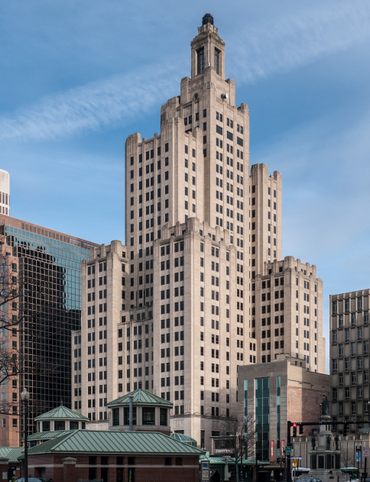
6 Huge Things in Tiny Rhode Island
The smallest state in America is often the butt of jokes. Rhode Island is neither a road nor an island, and it was once famously parodied in the now-defunct website “How Many Rhode Islands”—a simple tool that allowed you to see just how many Rhode Islands could squeeze inside a given country. The United States could contain 3,066 Rhode Islands, and Russia could hold 5,445. But the tiny state has a rather grand history. Rhode Island was founded on the principle of religious freedom, was the first of the Thirteen Colonies to renounce its allegiance to the British Crown, and was one of only two states not to ratify the 18th Amendment, which prohibited the manufacture and sale of alcohol. Many of the state’s attractions still loom large, including a 58-foot-long blue fiberglass termite and an improbably large blue bear slumped under a lampshade.
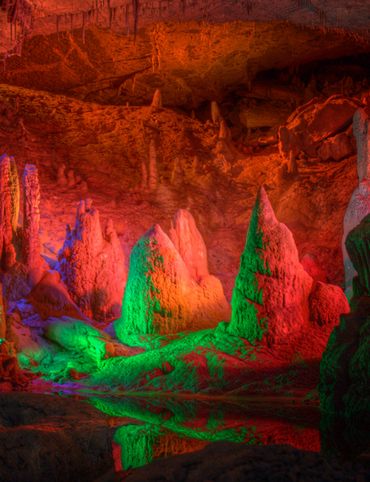
7 Underground Thrills Only Found in Tennessee
Famous for country music and hot chicken, Tennessee is also filled with natural wonders. Across the state, caverns beckon. Venturing into some of Tennessee's strangest subterranean haunts is a great way to experience the depths of the state's spell-binding charm.

Sink Into 7 of Louisiana's Swampiest Secrets
Louisiana has long had a complex relationship with the wet world. Chitimacha, Choctaw, and Atakapa peoples built communities among the knobby knees of bald cypress trees; French fur traders and pirates eventually made their own marks. Later still, modern engineers attempted to corral waters with levees and dams, or to reclaim land where there had been none. Across the 50,000-odd square miles that make up the state, troves of special places are becoming concealed by rising water. Here are seven places water has revealed or covered up.

7 Mechanical Marvels in Michigan
Michigan is famous for its steep, sweeping sand dunes, freckling of lakes, and unique fossils—but across the state, you'll find slews of automated wonders, past and present. From old animatronic toys to the ruins of early assembly lines, here are seven places to be dazzled by industry.

11 Wholesome Spots in Nevada
Here at Atlas Obscura, we have a fondness for the forbidden, a hunger for the hidden, a gusto for the grim. (You get the point.) But it wouldn’t be so intrepid to simply highlight Nevada’s underbelly, would it? There’s more to the state than extraterrestrial-themed brothels and nuclear bomb test sites. Kids and grandparents might enjoy enormous Ferris wheels, unusual geysers, or pristine parklands. Even Nevada—home to Sin City—has a family-friendly side.

7 Places to Glimpse Maine's Rich Railroad History
Maine is widely known for its mottled red crustaceans and stony-faced lighthouses, as well as bucolic towns and the top-notch hiking outside of them. But before all that, Maine was all about one thing: trains. As America industrialized in the 19th century, there was an insatiable demand to build and a hunger for lumber. Maine had plenty of it, and the state’s rivers became swollen with the fallen bodies of pine and spruce, much of which was hauled by rail. Trains did the heavy lifting to coastal hubs including Bangor and Ellsworth, and by 1924, there was enough railroad mileage in Maine to get from London’s King's Cross station to Mosul, Iraq. Over the years, some of the old cars were fashioned into eateries, but many were simply abandoned in the woods. Now, relics of Maine’s railroad history are scattered in museums, restaurants, and more.

11 Places Where Alaska Bursts Into Color
Picture Alaska. You might see in your mind's eye the granite and stark white snowcaps of Denali National Park, or the dark seas that surround 6,000-plus miles of coastline, or the muted olive of its tundra in the summer. But as anyone who's been there knows, the country's largest, most sparsely populated state can absolutely burst with color, from the luminous green of the Northern Lights, to the deep aqua of its glaciers, to the flourish of wildflowers fed by its long summer days. Here are some places to see the full spectrum of The Last Frontier.
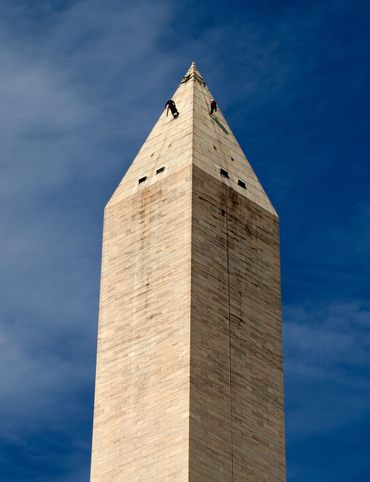
9 Places in D.C. That You're Probably Never Allowed to Go
The District of Columbia is home to a number of places that you need to flash the right ID to access. From restricted rooftops to government storage facilities and underground tunnels, the city is filled with places that are off-limits to the average visitor. What’s more, many of them are hidden within popular tourist destinations and densely populated neighborhoods—so you might catch a glimpse of them, but never get any closer. These are a few of our favorite restricted spots in D.C., and the stories behind them.
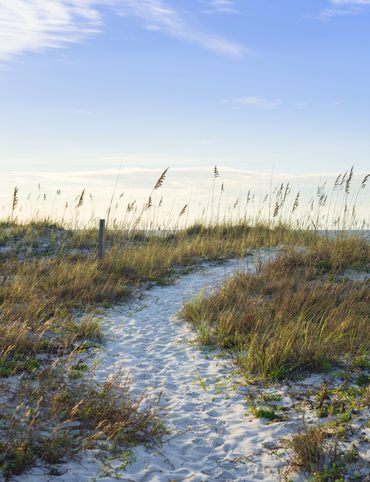
2 Perfect Days in Pensacola
Sponsored by Visit Pensacola
If you thought Pensacola, Florida—with its powder-white sand beaches, near-perfect weather, and fresh seafood—was just a place to soak up the sun, think again. In fact, the city and beach of the same name is the site of the first European settlement in the continental United States. Established by Spanish explorer Tristán de Luna in 1559, it was christened Panzacola, a name of Native American origin and the precursor to the city’s modern name. The destination is also the birthplace of U.S. naval aviation and is still home to a naval air station and the thousands of service members stationed there, as well as the Blue Angels, the flight squadron famous for their death-defying fighter plane stunts. This delightful coastal city is an ideal, if somewhat quirky, blend of historical sites (on land and underwater) and activities to get your adrenaline flowing.
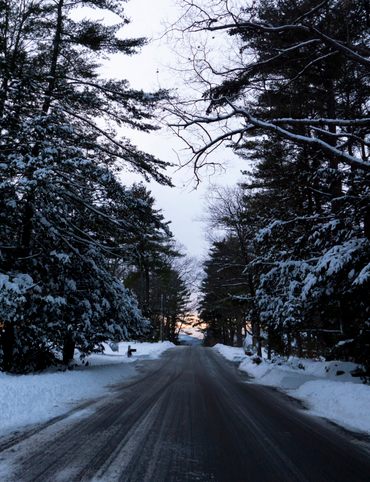
Rogue Routes: The Road to the Ice Castles
Sponsored by Nissan
A deep blanket of snow often covers New England in the winter. But there’s adventure to be found in the frozen landscape, with its steep mountains and frozen ponds—and not just for skiers and snowboarders. This route blazes a unique path through Massachusetts and New Hampshire that is filled with bright colors, bold flavors, and the legacies of pioneering thinkers.

Taste of Tucson
Sponsored by Visit Tucson
The people of Tucson have been eating off the land for 4,100 years. From grains to livestock to produce introduced by missionaries in the 1600s, this UNESCO City of Gastronomy is home to some of the oldest farmland in North America. What once was old is new again in The Old Pueblo where ancient flavors are found in nearly every dish — trendy to traditional.
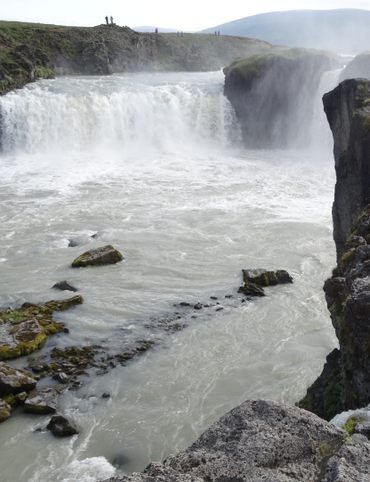
North Iceland’s Untamed Coast
Sponsored by Icelandair
Any travel enthusiast would be hard-pressed to open any social media channel and not see photos of Iceland, with its jaw-dropping peaks, natural hot springs, pure glaciers, northern lights and snow-covered landscapes. But the island nation’s appeal goes well beyond the well-worn paths of Reykjavik, the Golden Circle and the southern region's countryside. Travel to the untamed north along the Arctic Coast Way to discover otherworldly beauty—sans crowds—around every bend.

Hidden Edinburgh
Crowds clog Edinburgh's Royal Mile, the main artery between Edinburgh Castle and Holyrood Palace. The road is dotted with stores selling Nessie trinkets and lined with bagpipers and street performers pulling off dazzling tricks. But look beyond the tartan tourist traps, and you’ll discover tucked-away gardens, remnants of the city’s medieval past, and much more.
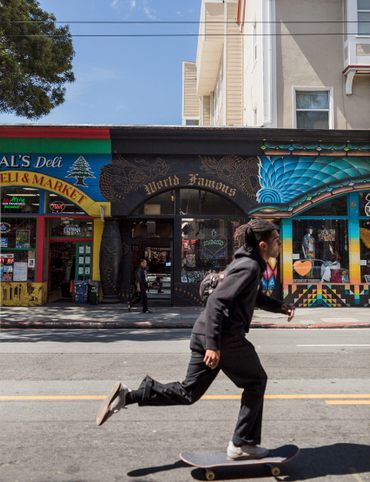
Hidden Haight-Ashbury
In 1967, 100,000 artists, activists, and hippies gathered in San Francisco’s Haight-Ashbury neighborhood for the Summer of Love. Janis Joplin and Jimi Hendrix played free concerts for fields of college dropouts, and San Francisco established itself as a countercultural capital. More than 50 years later, in a city increasingly known for Twitter and tech rather than art and activism, travelers who come on a pilgrimage are often disappointed to find expensive, skin-deep psychedelia. But if you know where to look, you’ll find a walk down Haight Street to be wonderfully weird, full of historic links to hippiedom and modern takes on the vibe.
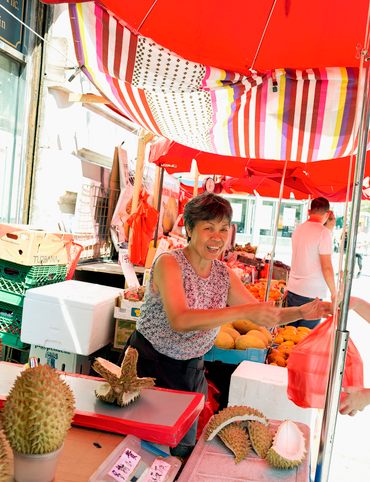
The Many Flavors of NYC’s Five Boroughs
More than eight million diverse individuals call New York City home, and many of them share their heritage through food. Whether it’s a billiards hall that serves stellar Bhutanese fare or a mosque where Malian vendors sell snacks for just a few hours each Friday, the city offers a vast culinary landscape for those willing to explore it. Venture beyond the flashy hotspots with months-long waiting lists and you’ll find New York’s true flavor lies within the small restaurants and stands rooted in its thriving immigrant communities.
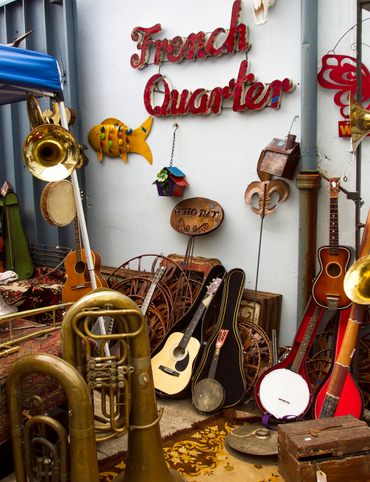
Hidden French Quarter
It may be famous for Mardi Gras, but New Orleans has subtle, surprising wonders on tap all year long—even in the touristy French Quarter. Around every cobblestoned corner, you’ll find historic ephemera, bits of Creole culture, environmentalism, and no shortage of spooky stories, whenever you happen to visit.
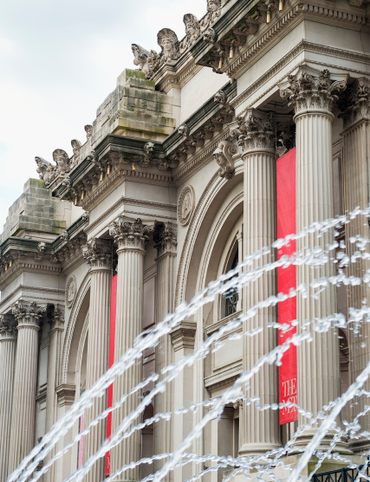
The Metropolitan Museum of Art
From the street, the Metropolitan Museum of Art is hard to miss: The institution’s two-million-square-foot main building, at 1000 Fifth Avenue, spans four New York City blocks and stretches into Central Park. Inside the galleries, you’ll find thousands of objects spanning 5,000 years of world history. With so many treasures under one roof, it's inevitable that some fascinating pieces are tucked into the museum's lonelier nooks and crannies, hiding in plain sight. The next time you spend a day at the museum, keep an eye out for these overlooked wonders.

Motown to Music City Road Trip
Sponsored by Go RVing
Detroit and Nashville are synonymous with two all-American music genres. It’s no surprise that visitors flock to these cities each year to get a feel for the places where artists such as Marvin Gaye, Diana Ross & the Supremes, Johnny Cash, and Dolly Parton began their careers. A (relatively) straight, north to south route connects the two cities, as does musical heritage. Load up the RV, make sure your speaker system is in tip-top shape, and create a playlist filled with old-school Motown and Country hits. If you're not driving on the trip down south, you should be dancing.
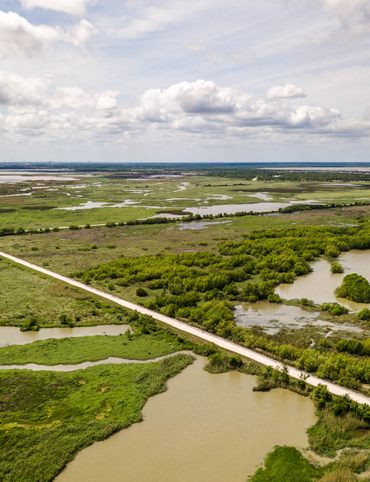
Gulf Coast Road Trip
Sponsored by Go RVing
The terrain along the Gulf of Mexico is sometimes called the “Third Coast,” but for an offbeat road trip, it’s second to none. Starting in Houston and ending in Pensacola Bay, this journey takes you through some of America’s most diverse landscapes. You’ll cross Cajun swamps, drive along sparkling white sand beaches, and even spend some time in the Big Easy. Take an RV and camp along the way to truly immerse yourself in this wondrous region. The world’s largest gulf, it turns out, holds some of America’s best-kept secrets.
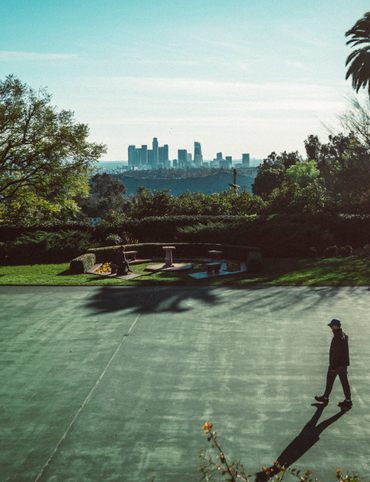
Highland Park
Sponsored by Discover Los Angeles
Los Angeles’ Highland Park is a diverse, eclectic neighborhood that Native Americans and Latinx communities have inhabited for centuries. Celebrated for its history, art scene, ethnic diversity, and cuisine, Highland Park is filled with surprising delights that more and more people are discovering every day. Exploring the neighborhood's nooks and crannies is one of the most rewarding ways to spend a day in L.A.

Venice
Sponsored by Discover Los Angeles
Once referred to as “The Coney Island of the Pacific,” L.A.’s beachfront neighborhood of Venice has long been a popular tourist destination. Its colorful characters, quirky architecture, and carnivalesque atmosphere are well-known the world over. But take a moment to look past the kitsch, and you’ll discover a place where artistic ingenuity thrives more than a century after Abbot Kinney endeavored to bring a grandiose version of Venice to America. The bohemian beehive has always attracted artists and performers, and everyone is welcome to enjoy the show.
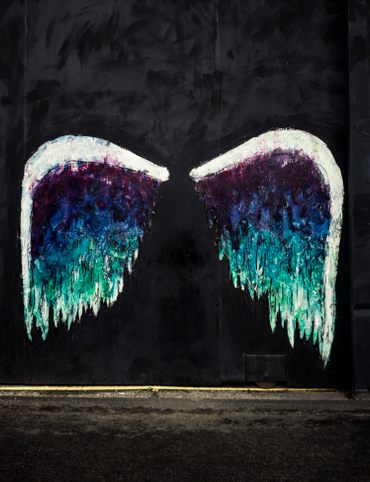
L.A.’s Downtown Arts District
Sponsored by Discover Los Angeles
The 1970s brought a wave of artists into this former industrial area in Downtown Los Angeles. They sparked a fuse of creative imagination that burned for years. Up-and-coming creators took advantage of the then-low rents and built a foundation for the creative mecca that exists here today. In its infancy, L.A.’s Downtown Arts District came to life behind-the-scenes, with artists mostly working in closed studios. Today, the art has spilled onto the streets in the form of colorful murals, attractive gallery spaces, and stylish storefronts. But the curious explorer can still find literal and figurative traces of the ‘70s. In addition to the more historic spots that remain, a creative, entrepreneurial spirit abounds.
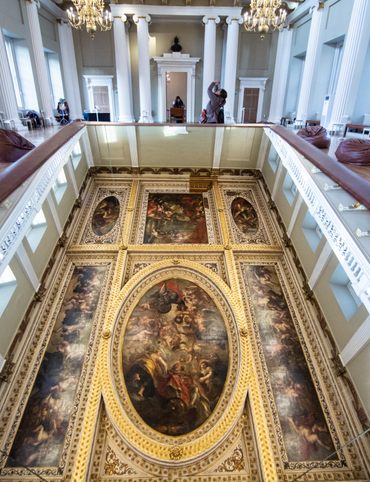
Hidden Trafalgar Square
Wedged between Charing Cross and Leicester Square, Trafalgar Square is known for the throngs of people flocking to its famous attractions. Weave around the tourists on the National Gallery stairs and dodge the crowds clogging the street corners. Instead, duck down dreamy alleys and pop into unique, overlooked museums and shops. There, a secret side of this busy area waits to reveal itself.

Secrets of NYC’s Five Boroughs
Sponsored by NYCgo
Few cities on Earth are as well-trodden as New York–but as any intrepid traveler knows, the more you explore a place, the more wonders you find. You may not be able to discover all of these spots in a single trip, but that could be a good thing. No matter how many times you return, the city that never sleeps never ceases to surprise. Visit NYCGo to uncover more of the city’s secret spots.
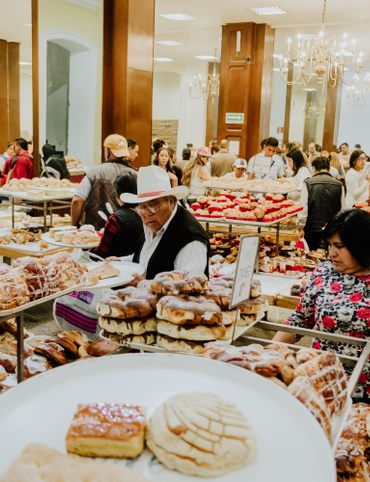
Mexico City's Centro Histórico
Anchored by the Zócalo plaza and the architectural splendor of the Palacio de Bellas Artes, Mexico City's historic center rightfully draws scores of visitors from around the world. If you look, smell, and taste carefully, you’ll also find a universe of culinary offerings that tells stories of immigration, adaptation, and imagination. With the help of Culinary Backstreets, we assembled a primer on eating and drinking your way through the district.

Hidden Hollywood
Hollywood Boulevard is world-famous—for the Oscars and the Walk of Fame, for schlocky souvenir shops and crowded tour buses. But beyond the terrazzo stars and the occasional celebrity sighting, there’s plenty left to discover. Here’s how to make Hollywood’s acquaintance, whether you’re a visitor or a local who keeps a practiced distance from these busy, saturated blocks. Look closer and you'll find a neighborhood full of nature, history, and wonder.
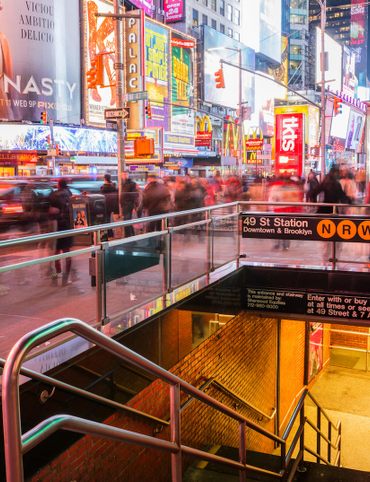
Hidden Times Square
There's the Times Square you know, full of blazing billboards, selfie sticks, and costumed characters. Then there's the less familiar one, beyond the lights—the nooks and crannies that most visitors to Midtown Manhattan overlook. They're not obvious, but surprises can still be found along this world-famous stretch of real estate.

Summer Radio Road-Trip
Follow along on our 2,200-mile adventure with NPR's 'All Things Considered.'
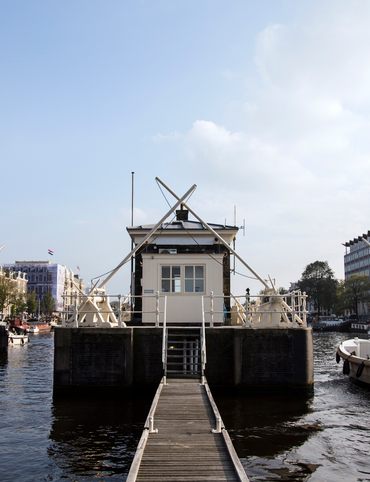
Amsterdam
Forge your own path in this tourist magnet, toward places that are less crowded but no less wondrous.
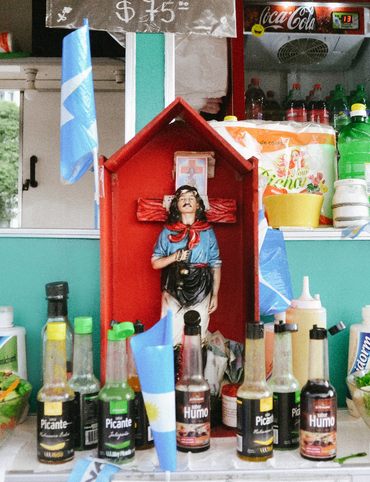
Buenos Aires
Find faded grandeur and vibrant street life in Argentina's largest city.
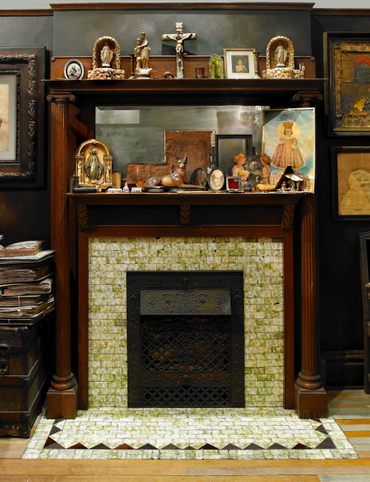
Chicago
Just when you thought you knew the Windy City, it finds new ways to surprise you.
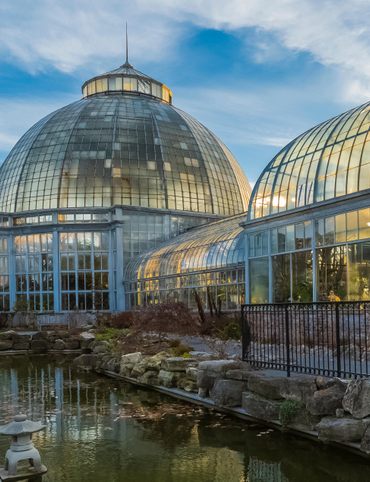
Detroit
Find secret vistas, labyrinthine bookstores, and eclectic public art.
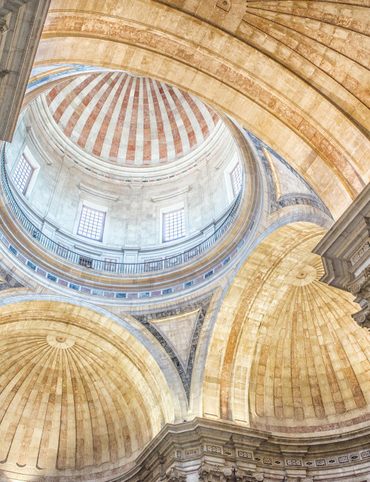
Lisbon
In the homeland of explorers, your best bet is to keep looking.

Miami
Go beyond the beaches in the continental United States’ only truly tropical city.

Queens
New York City's most diverse borough is also its most rewarding.

San Diego
Southern California's second city holds plenty of sparkling secrets.

Savannah
Find surprises around every corner in a U.S. city that embraces history like no other.

A Gastro Obscura Guide to Family-Friendly Dining in San Diego
Sponsored by San Diego Tourism
In San Diego, a city on the sea just over the border from the coastal state of Baja California, the freshness of the food leaps off the plate, thanks to chefs who are constantly finding new ways to turn local produce and seafood into something delectable. The city’s history, heritage, and proximity to Mexico—combined with the fresh, simple flavors of California cuisine—create a cross-border culinary identity known as Cali-Baja. It’s not just a fusion, but a lifestyle rooted in variety and simplicity. While San Diego has a long and celebrated tradition of excellent Mexican food—from street tacos to aguachile—that’s just the beginning. The city’s diverse neighborhoods each bring something unique to the table: hand-pulled noodles in Convoy District, beachside burgers in Ocean Beach, artisan pasta in Little Italy, and seafood-forward small plates in La Jolla. The commitment to bold flavor and local ingredients is unmistakable. And thanks to year-round sunshine and a laid-back beach culture, great food is easy to find and even easier to enjoy. This diversity of cuisine, paired with an adventurous, open-hearted spirit, makes America’s Finest City a standout destination for curious eaters and families alike.

The Explorer’s Guide to Outdoor Wonders In Maryland
Sponsored by Visit Maryland
With wild horses, a small elk called a “sika,” a massive population of bald eagles, and the once-endangered fox squirrel, the state of Maryland is home to a thrilling variety of wildlife. Across diverse ecosystems like swamps, cliffs, mountains, and sandy beaches, the state springs alive during spring and summer with the sounds of birds, mammals, amphibians, and reptiles that the state has been careful to protect. Perfect for outdoor enthusiasts, these parks, preserves, and protected areas across Maryland offer visitors a chance to encounter fauna they may have never even known existed.

The Secret Lives of Cities: Ljubljana
How many times can a city be called a “hidden gem” before it stops being hidden? Judging by the enthusiastic throngs wandering its cobbled Baroque streets in summer, Slovenia’s capital has certainly been discovered, but perhaps by the wiser tourists. Though it is popular it is never overcrowded, and each visitor who falls for its charms (and they inevitably do) feels as though they’ve stumbled upon a secret treasure. Perhaps this lingering sense of discovery comes from its tricky-to-pronounce name (Loo-blee-ah-nah) or the fact that Slovenia only gained independence from Yugoslavia in 1991, making it feel newly accessible to many travelers. But this very quality is part of its appeal—Ljubljana is a city full of surprises. It’s unexpectedly elegant and prosperous (historically the most developed of the former Yugoslav capitals), remarkably easy to visit , impressively green (a former European Green Capital with the highest percentage of pedestrianized streets in Europe), surprisingly well-connected, and effortlessly cool. With a quarter of its 300,000-odd inhabitants being students, Ljubljana has a vibrant, youthful energy combined with refined Central European charm. Though often grouped with “Eastern Europe,” all of Slovenia actually lies west of Vienna, which was historically its greatest influence, having been part of the Habsburg Empire for centuries. The city center is compact, highly walkable, and photogenic, with minimal Socialist-era architecture disrupting its Old World atmosphere—unlike sister cities such as Belgrade. And then there’s its stunning backdrop: a 30-minute drive north, the snow-capped Alps rise majestically above the skyline. Spend just a few hours in Ljubljana, and it will come as no surprise that its name translates to “beloved.”

From Cigar Boom to Culinary Gem: 10 Essential Spots in Ybor City
Sponsored by VISIT TAMPA BAY
In Ybor City, the past and present blend like the perfect café Cubano—rich, bold, and impossible to resist. Situated just northeast of downtown Tampa, Florida, the enclave was founded when Cuban cigar entrepreneur Vincente Martinez-Ybor opened a factory here in the 1880s. That one business move created a boom for cigars (at its height, Ybor City had more than 200 cigar factories), prompting an explosion of lodging, restaurants, shops and nightclubs. Today, it’s still a haven for vibrant cultural touchpoints that blend its Cuban roots with Floridian, Spanish, Italian and global influences from farther-flung locations. On its charming streets, guests will find Cuban eateries ranging from traditional to creative, and cigar shops (and even a working factory) that retains the spirit of its past. From picadillo to hand-rolled cigars, Ybor City has plenty of treasures to offer. A word to the wise: Come hungry for discovery.

The Explorer’s Guide to Wyoming’s Captivating History
Sponsored by Travel Wyoming
From legendary outlaw hideouts and prehistoric fossil beds, to a centuries-old Native American rock formation and a critical landmark along the Oregon Trail, Wyoming is packed with storied sites worth seeing. Here’s 10 fascinating stops to get you started.

A Nature Lover’s Guide to Sarasota: 9 Wild & Tranquil Spots
Sponsored by Visit Sarasota County
With its endangered Florida scrub jays, athletic bobcats, fields of colorful wildflowers, and eerie mangrove tunnels, southwest Florida’s Sarasota County is far from one note. While it offers the requisite Sunshine State landscapes of pristine beaches and lapping waves, there’s so much more for nature lovers to see and experience. With 725 square miles—including 35 miles of beachfront overlooking the glittering Gulf of Mexico—Sarasota County has varied landscapes that support all manner of wildlife. Whether you’re looking for a low-key stroll beneath moss-draped trees, the rush of seeing hundreds of alligators converging in one place, or an exploratory horseback ride, this extraordinary area has you covered. Here, we’ve rounded up nine can’t-miss Sarasota stops, so get ready for the ultimate outdoor lovers’ excursion. Trust us: Sarasota County hits all of the high notes.

California’s Unbelievable Landscapes: A Guide to Nature’s Masterpieces
Sponsored by Visit California
California is a land of dramatic landscapes. It has mountains, volcanoes, sweeping deserts and seashore galore; its natural splendor even extends below the surface of the earth, to cavernous caves and man-made underground gardens. Many of its geological and biological wonders will make you feel like you’re on another planet, or like you’ve been transported to a storybook where trees speak, shrink, or live forever. Whether you’re eager to explore volcanic history, surround yourself with walls of glistening ferns, or summit mountains to see twisting trees and desert views, in California, the most unbelievable landscapes are just around the corner.

The Ultimate California Guide to Tide Pools and Coastal Marine Life
Sponsored by Visit California
California’s long coast is beloved by surfers, sure, but it’s also a hotbed for another sort of sunny activity: tide pool exploration. At low tide along California’s shoreline, pools of tiny living wonders appear – home to sea stars, urchins, spiny lobsters, slugs, shells and flowing bits of algae. We’ve rounded up some of the best tide pools in the state, to inspire the budding marine biologist in all of us. Know Before You Go Before you begin your tide pool adventure, there are a few things you should know. 1. First, check the tide schedule before you set off for the beach, as most of these tide pools are only visible at low tide. (Fall and Winter are usually the best seasons for this sort of exploration, as the tides are lower.) 2. In order to preserve the wild world of nature that exists inside each tide pool, you should never remove any animals from their habitats; some state parks even forbid touching the animals inside the tide pools, so follow the local rules at every stop along the way.

Explore California on Foot: Nature’s Year-Round Playground
Sponsored by Visit California
For those of us who live in colder climates, California can seem a legitimate dream: sunny beaches, temperate mountain vistas, and awe-inspiring desert landscape. In every season, the Golden State is rife with opportunities for strolling, hiking, and rambling through its diverse climates and thrilling geographies. You can walk breezy beaches and see a waterfall that crashes directly into the sea, climb the country’s highest sand dunes, explore a glistening green canyon, or even go subterranean. Whatever you choose, we’ve collected 10 great ways to see the state on foot.
